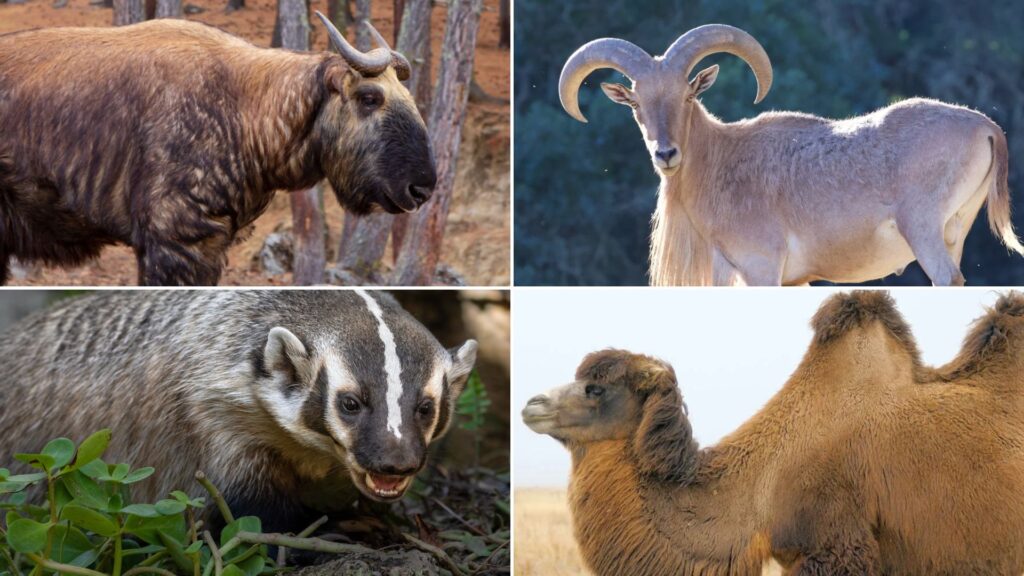Are you mesmerized by the diversity of animals in our world? Have you ever wondered about the creatures whose names begin with the letter B?
From the majestic Bengal tiger to the tiny bandicoot rat, animals with B names represent various species across different habitats and continents.
Many struggle to name more than a few common examples, missing out on nature’s rich variety.
This article will introduce you to 50 stunning animals with B names and share interesting facts about their characteristics, habitats, and behaviors.
By exploring these creatures, you’ll gain a deeper understanding of the animal kingdom and perhaps discover some new favorites.
Animals Beginning With The Alphabet B
Animals starting with B showcase the variety of life on Earth. This section looks at creatures from common pets to rare species in distant places.
Each animal has its features and ways of living that help it succeed in its home.
As we go through this list, you’ll learn fun facts about animals you know and maybe meet some new ones. Let’s start our tour of animals whose names begin with B.
1. Babirusa
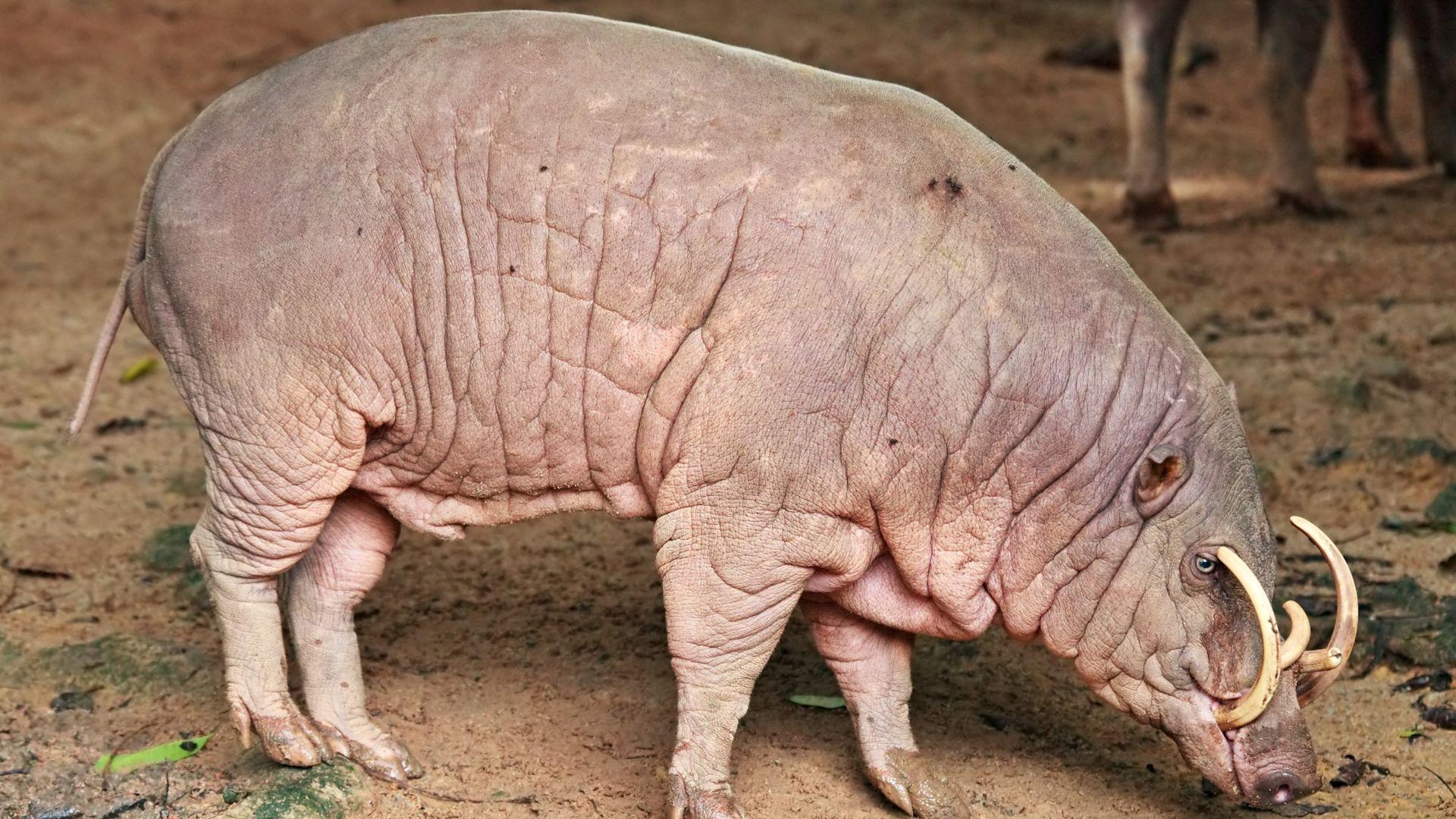
Babirusa, also known as deer-pig, is a wild pig species native to Indonesian islands. It is known for its unique, upward-curving tusks that resemble antlers.
Babirusas are omnivores, feeding on fruits, leaves, and small animals. They have a bulky, barrel-shaped body covered in sparse hair and can grow up to 3 feet tall and weigh between 220 and 240 pounds.
- Region of Habitat: Indonesian islands
- Scientific Name: Babyrousa spp.
- Place of Origin: Indonesia
- Feeding Habits: Omnivorous, eating fruits, leaves, and small animals
- What Sound They Make: Grunting and squealing sounds
Fun Fact: The babirusa’s tusks can grow so long they curve back and penetrate the animal’s skull. These tusks are the upper canines that grow through the upper jaw and curve backward.
2. Baboon
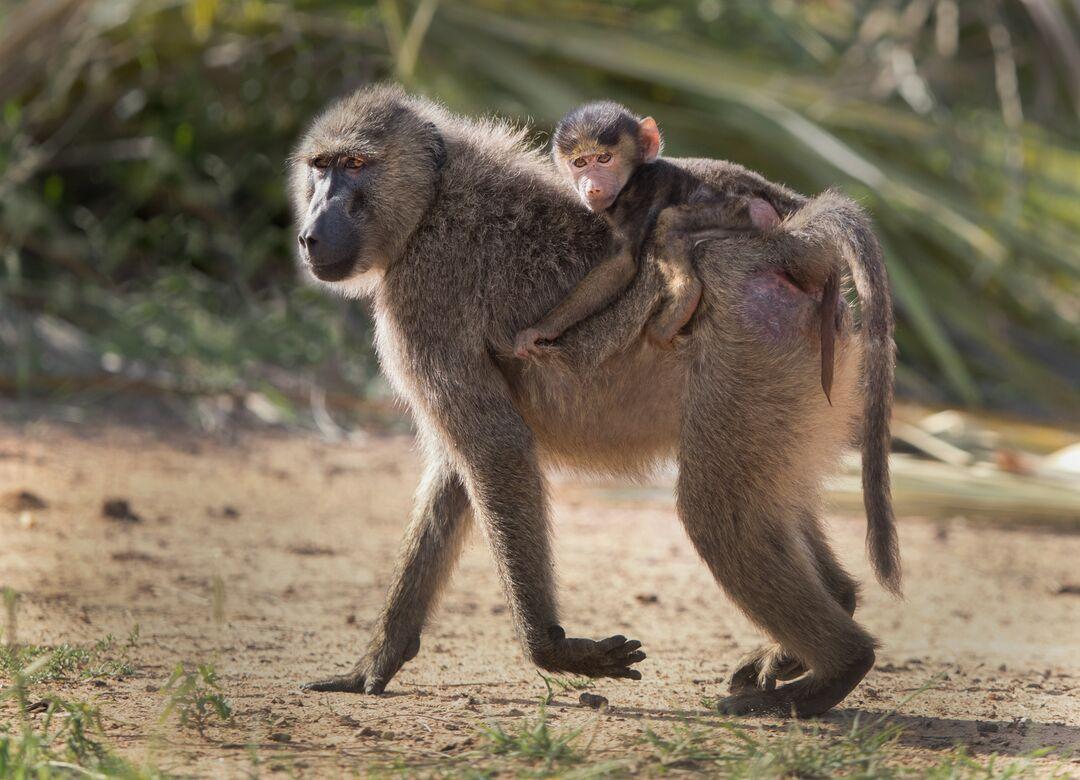
Baboons are large terrestrial monkeys found in Africa and Arabia. They have powerful jaws and large canine teeth, which they use for defense and eating.
Baboons live in complex social groups and are known for their intelligence and adaptability. They have a muscular build and a dog-like face with a pronounced muzzle. They stand 20-34 inches tall and weigh 30-100 pounds.
- Region of Habitat: Africa, Arabia
- Scientific Name: Papio
- Place of Origin: Africa, Arabia
- Feeding Habits: Omnivorous, eating fruits, leaves, insects, and small mammals
- What Sound They Make: Barking and grunting sounds
Fun Fact: Baboons can travel more than four miles daily for food and water. They have highly organized social structures and communicate using a variety of vocalizations and body language.
3. Bactrian Camel
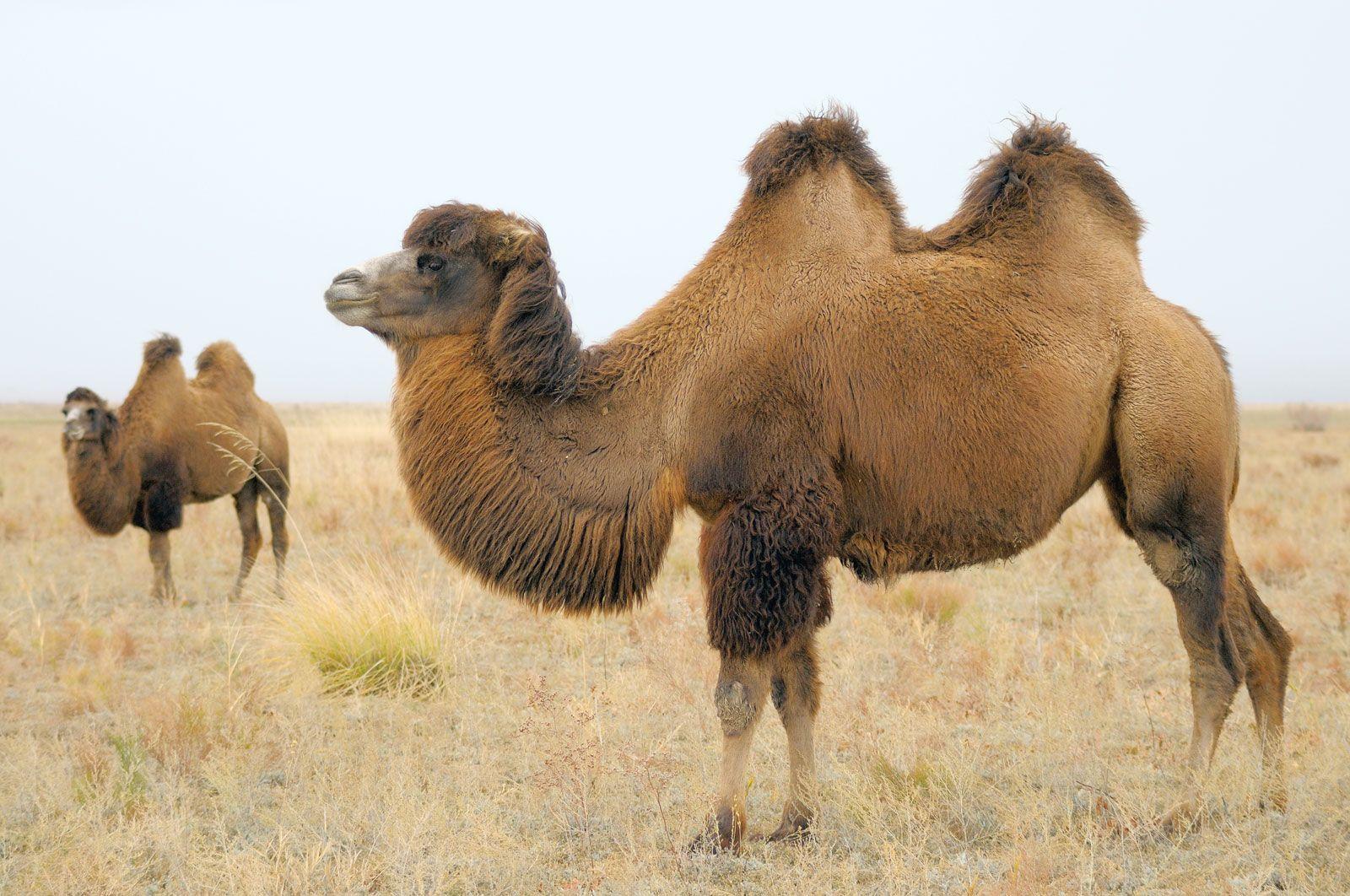
The Bactrian Camel is a large, even-toed, ungulate native to the steppes of Central Asia.
Known for its two humps, it is well-adapted to harsh desert climates and can go without water for long periods. They stand about 7 feet tall and weigh between 1,320-2,200 pounds.
- Region of Habitat: Central Asia
- Scientific Name: Camelus bactrianus
- Place of Origin: Central Asia
- Feeding Habits: Herbivorous, eating dry grasses, grains, and vegetation
- What Sound They Make: Grunting and moaning sounds
Fun Fact: Bactrian camels can survive extreme temperatures, ranging from -20°C to 40°C.
Their thick fur helps protect them from the cold, while their humps store fat that can be converted to water and energy when needed.
4. Badger
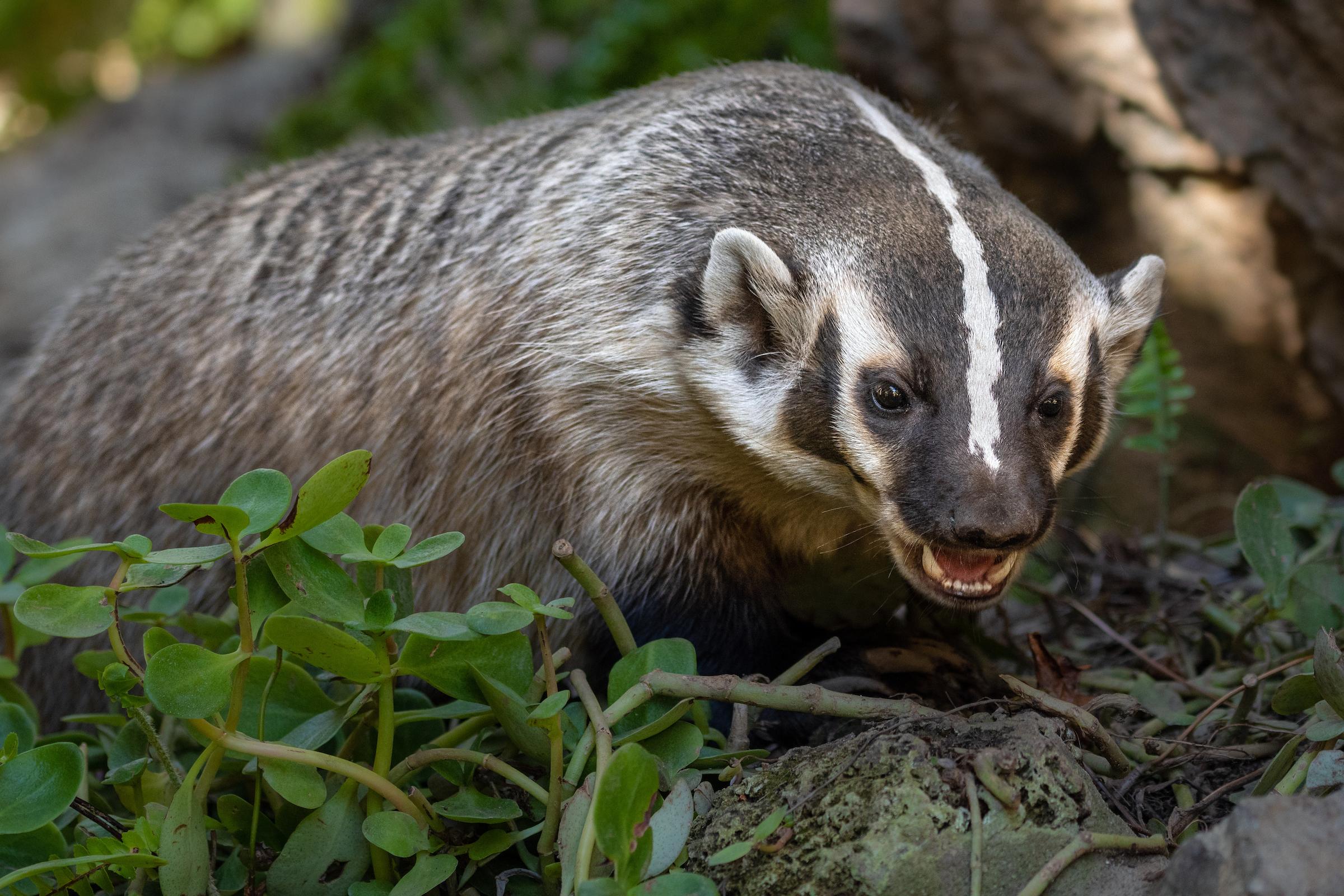
Badgers are burrowing mammals with distinctive black and white stripes on their faces. They are found in various habitats and are known for their digging abilities and aggressive defense behavior.
Badgers have a stocky build, short legs, and can weigh 15-30 pounds and stand 10-14 inches tall.
- Region of Habitat: Europe, North America
- Scientific Name: Meles meles (European), Taxidea taxus (American)
- Place of Origin: Europe, North America
- Feeding Habits: Omnivorous, eating earthworms, insects, small mammals, and plants
- What Sound They Make: Growling and hissing sounds
Fun Fact: Badgers are especially clean animals that build communal toilets away from their burrows.
They also have strong claws adapted for digging and can create extensive underground tunnel systems.
5. Bagworm Moth
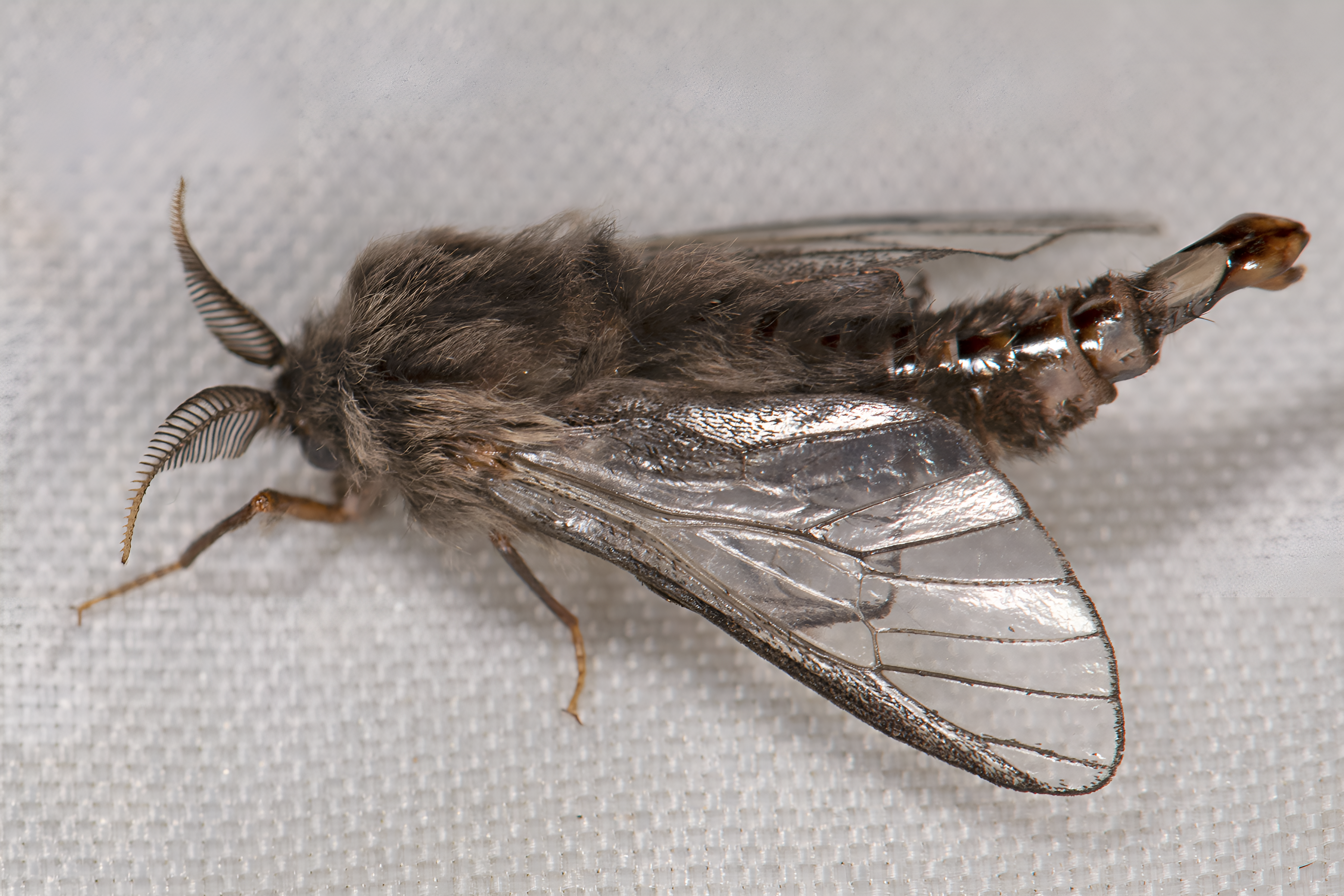
Bagworm Moths are small, dark-colored moths known for their larval cases made from silk and plant material.
They are found in forests and urban areas and can be pests to ornamental trees. Adult bagworm moths have a wingspan of 0.5-1 inch and weigh less than 0.01 ounces.
- Region of Habitat: Worldwide
- Scientific Name: Psychidae
- Place of Origin: Worldwide
- Feeding Habits: Herbivorous larvae feed on leaves and plant materials
- What Sound They Make: Silent
Fun Fact: Bagworm moth larvae construct portable cases from silk and plant debris. As they develop, these cases protect the larvae from predators and harsh environmental conditions.
6. Bald Eagle
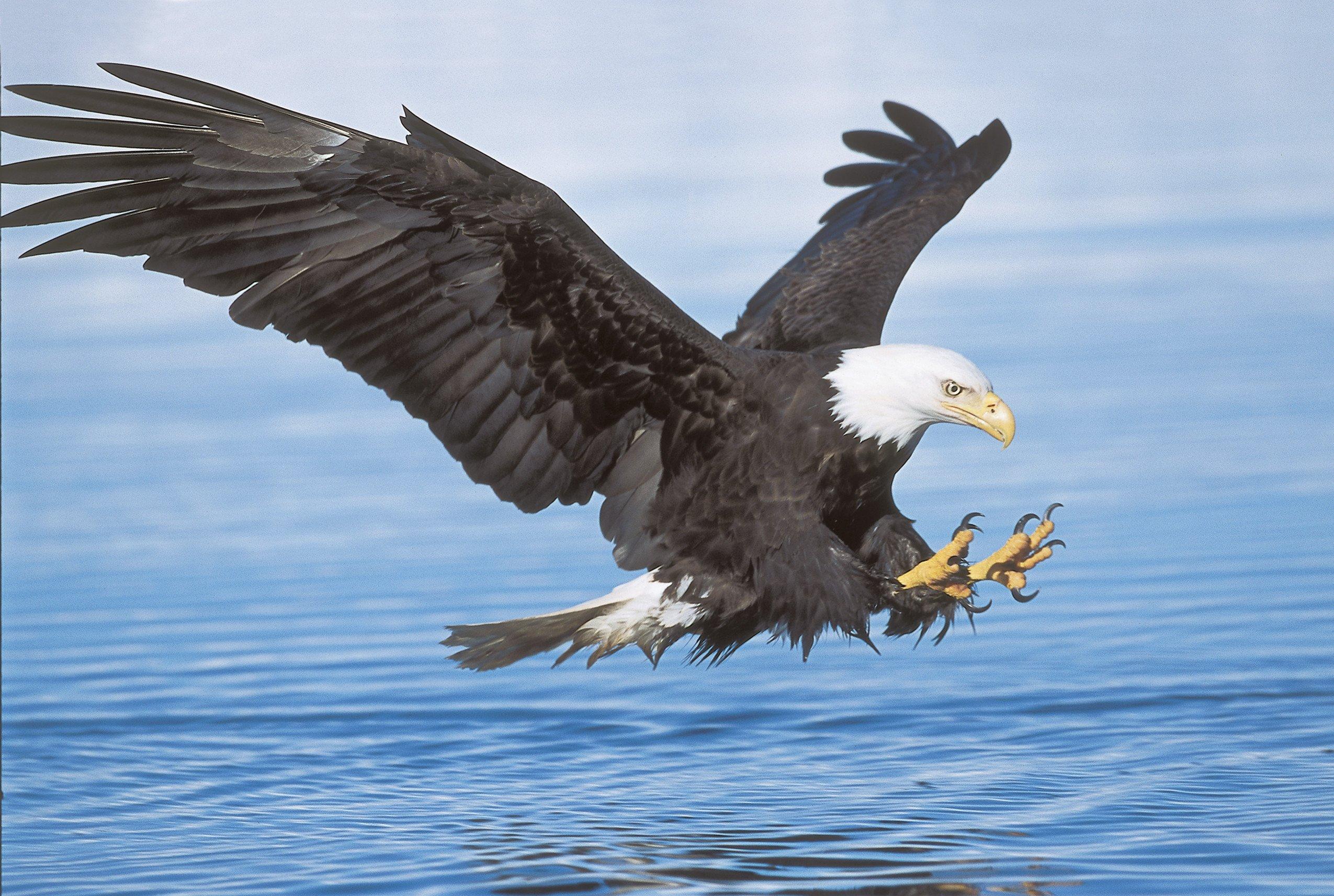
The Bald Eagle is a large bird of prey native to North America, known for its white head and tail and powerful build.
It is the national bird of the United States and is found near large bodies of open water. Bald eagles stand 28-40 inches tall and weigh between 6.6 and 14 pounds.
- Region of Habitat: North America
- Scientific Name: Haliaeetus leucocephalus
- Place of Origin: North America
- Feeding Habits: Carnivorous, primarily eating fish and small mammals
- What Sound They Make: High-pitched whistling and chirping sounds
Fun Fact: Bald eagles have 20/5 vision, which is much sharper than a human’s. They can spot prey from a great distance and dive at up to 100 miles per hour to catch it.
7. Baleen Whale
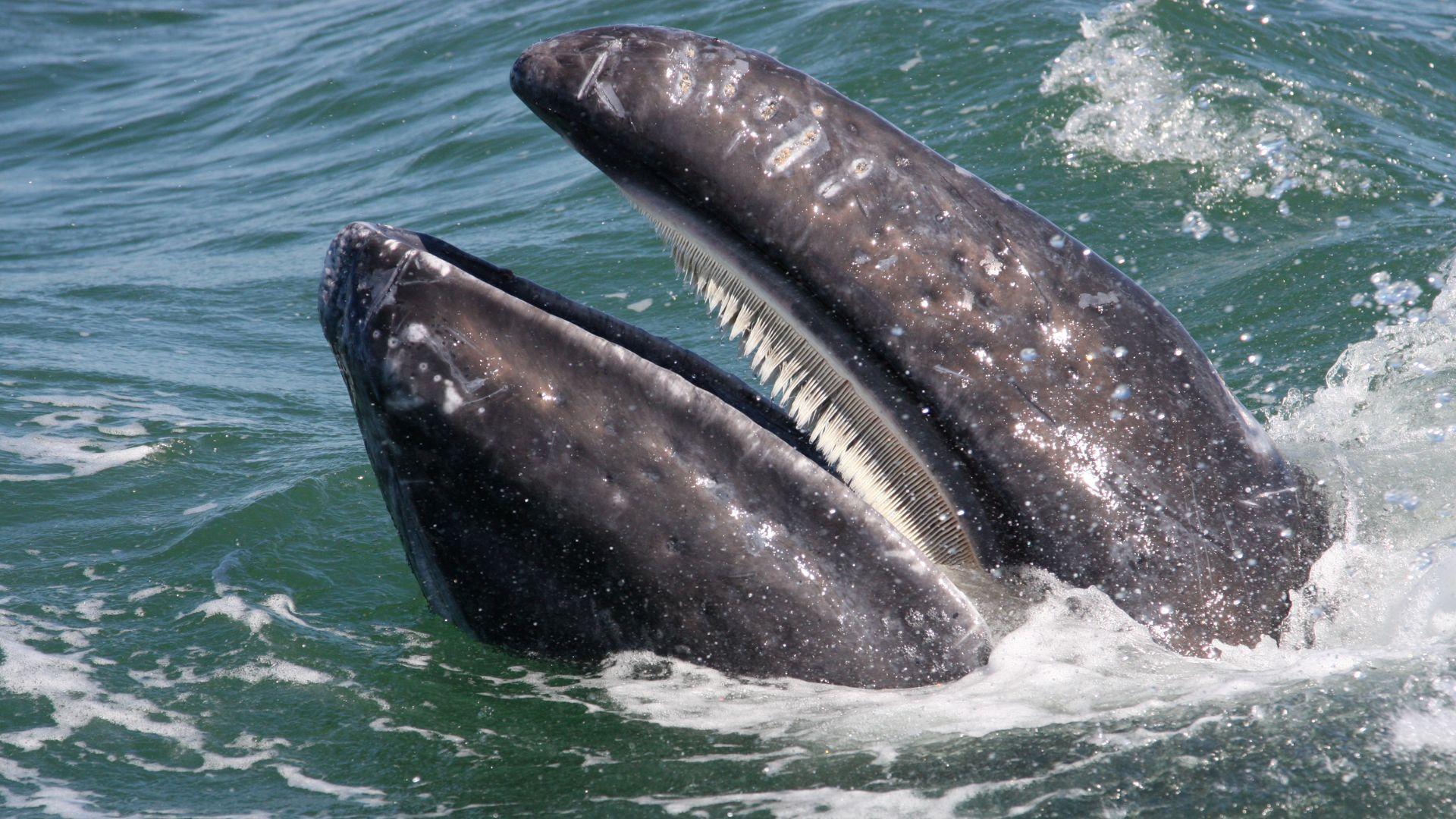
Baleen Whales are large whales that use baleen plates to filter feed on small marine organisms.
Baleen whales are found in oceans worldwide and are known for their immense size and gentle nature. They can grow between 33 and 98 feet long and weigh 20 to 200 tons.
- Region of Habitat: Worldwide oceans
- Scientific Name: Mysticeti
- Place of Origin: Worldwide oceans
- Feeding Habits: Filter feeders, eating plankton and small fish
- What Sound They Make: Low-frequency vocalizations and songs
Fun Fact: Baleen whales sing complex songs during their breeding season. These songs can travel great distances underwater and are used to attract mates and communicate with other whales.
8. Ball Python
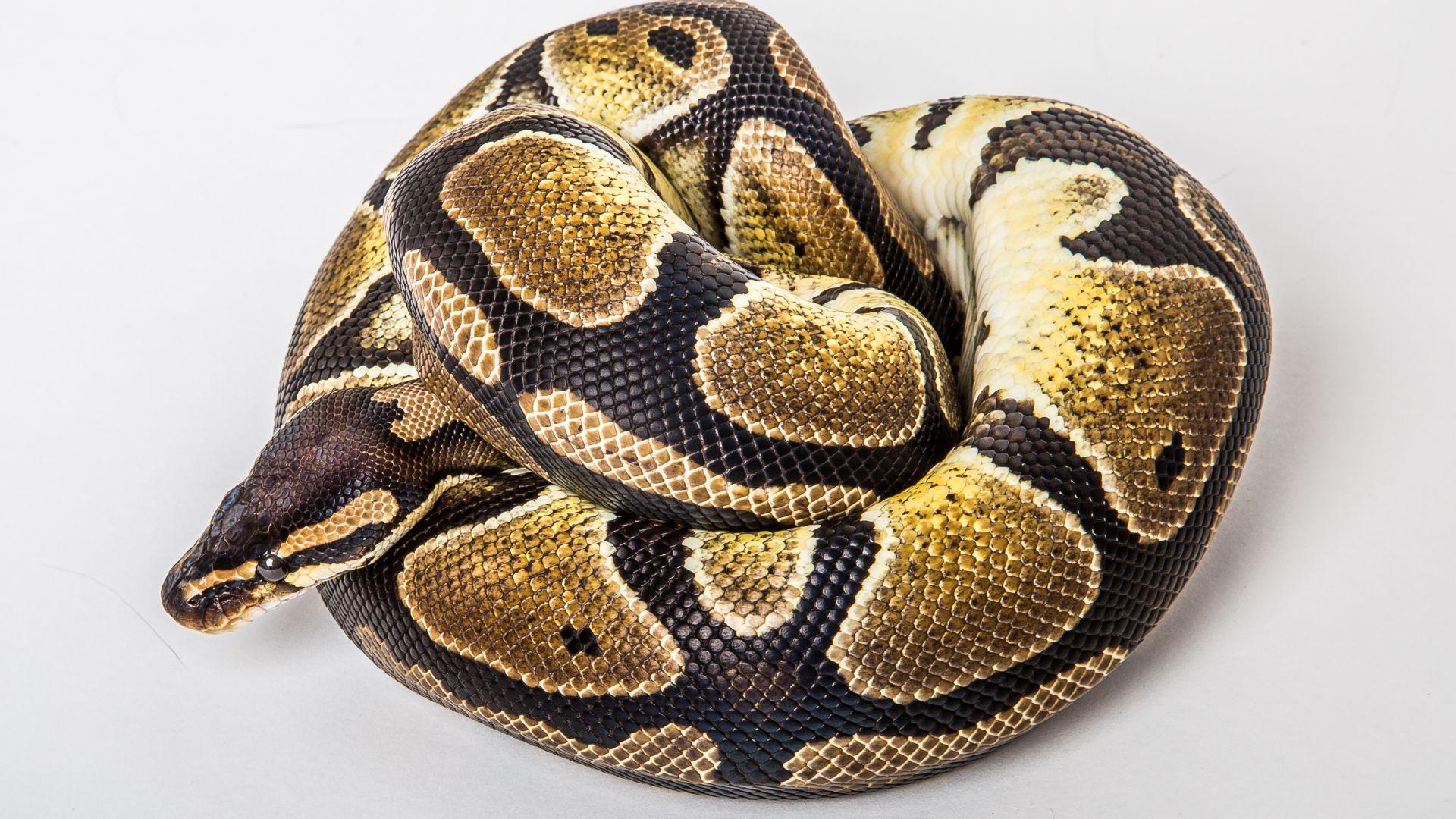
The Ball Python is a nonvenomous constrictor snake native to sub-Saharan Africa. It is popular as a pet due to its docile nature and manageable size.
Ball pythons are known for their tendency to curl into a ball when threatened. They can grow 3-5 feet long and weigh 3-5 pounds.
- Region of Habitat: Sub-Saharan Africa
- Scientific Name: Python regius
- Place of Origin: Sub-Saharan Africa
- Feeding Habits: Carnivorous, eating small mammals and birds
- What Sound They Make: Hissing sounds
Fun Fact: Ball pythons can live up to 30 years in captivity. They are also known for their striking color variations, which make them popular among reptile enthusiasts.
9. Bhutan Takin
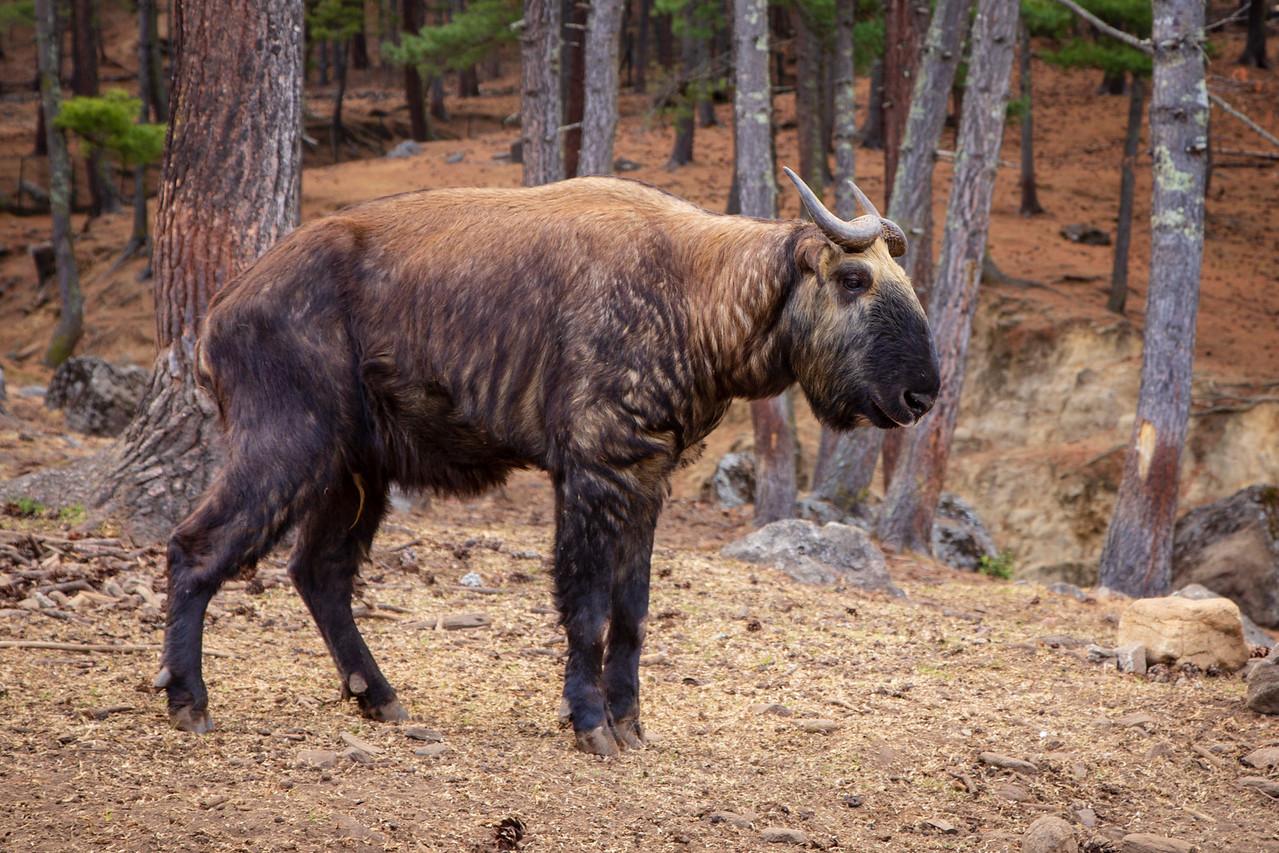
The Bhutan Takin is a large, muscular, ungulate found in the Himalayan regions of Bhutan.
Known for its unique appearance, resembling a cross between a goat and an antelope, the Bhutan takin has a thick, golden coat and a prominent snout.
These social animals are often found in herds, grazing on bamboo and other vegetation. Bhutan takins can grow up to 7.3 feet long and weigh between 550 and 770 pounds.
- Region of Habitat: Himalayan regions of Bhutan
- Scientific Name: Budorcas taxicolor whitei
- Place of Origin: Bhutan
- Feeding Habits: Herbivorous, eating bamboo, leaves, and grasses
- What Sound They Make: Grunting and bellowing sounds
Fun Fact: The Bhutan takin is Bhutan’s national animal. According to legend, the species was created by the Buddhist saint Drukpa Kunley, who fused a goat’s head and cow’s body.
10. Barracuda
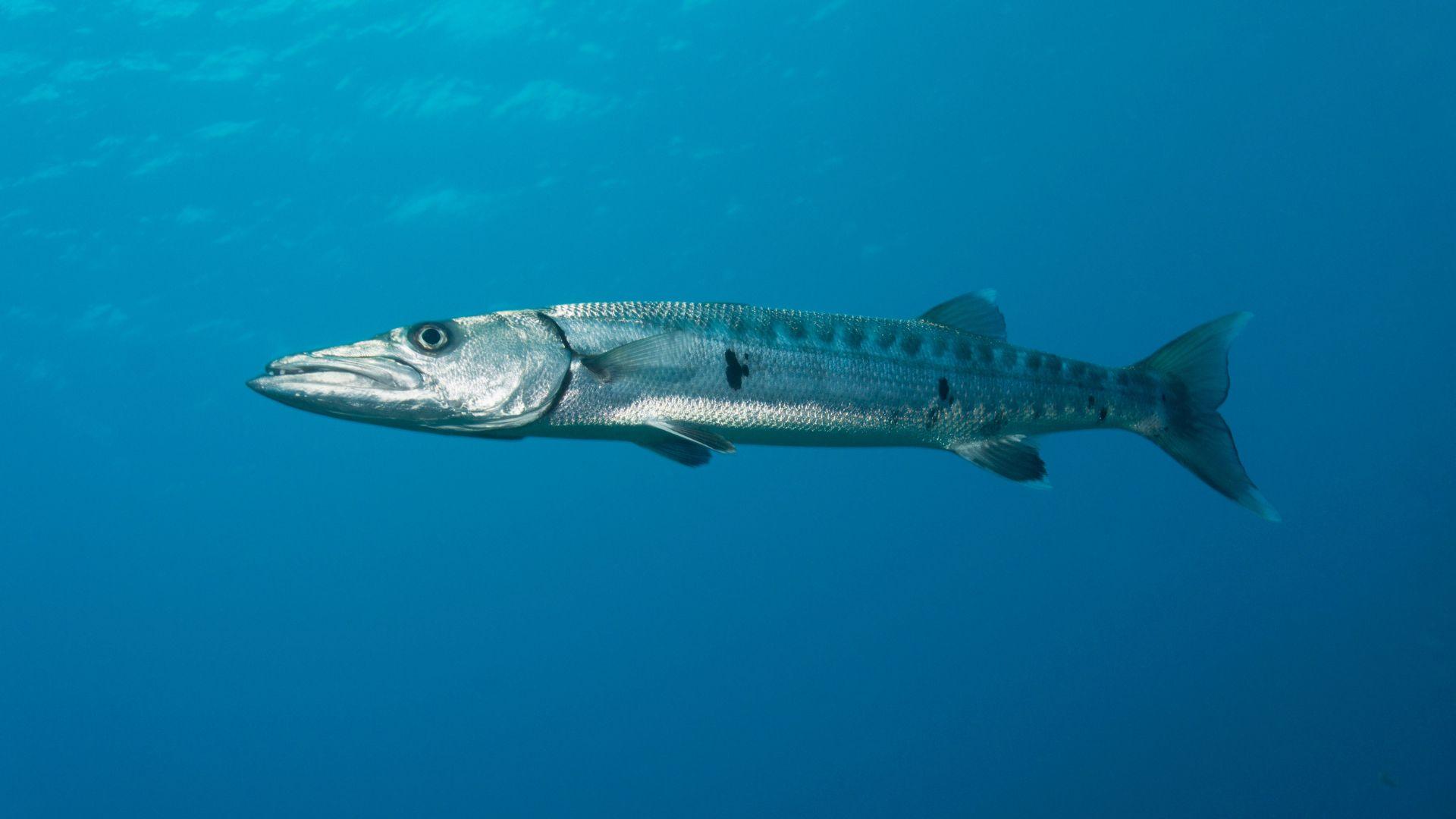
Barracudas are large, predatory fish known for their fearsome appearance and swift movements.
They inhabit tropical and subtropical oceans and are known for their long, slender bodies and sharp teeth. Barracudas can grow 1.5-6 feet long and weigh 10-50 pounds.
- Region of Habitat: Tropical and subtropical oceans
- Scientific Name: Sphyraena
- Place of Origin: Tropical and subtropical oceans
- Feeding Habits: Carnivorous, eating fish and squid
- What Sound They Make: Silent
Fun Fact: Barracudas can swim up to 27 mph in short bursts. They are often attracted to shiny objects, which they mistake for prey.
11. Basenji

The Basenji is a small, elegant dog breed known for lacking barking. Originating from Central Africa, this breed is often called the “barkless dog.”
Basenjis communicate through yodel-like sounds and are known for their keen hunting instincts and high energy levels. They can grow 16-17 inches tall and weigh between 22-24 pounds.
- Region of Habitat: Domestic, originally Central Africa
- Scientific Name: Canis lupus familiaris
- Place of Origin: Central Africa
- Feeding Habits: Omnivorous, eating commercial dog food and meat
- What Sound They Make: Yodeling and whining sounds
Fun Fact: Basenjis are known for their cat-like grooming habits, often licking themselves clean.
They are also among the oldest dog breeds, with roots tracing back thousands of years.
12. Bat
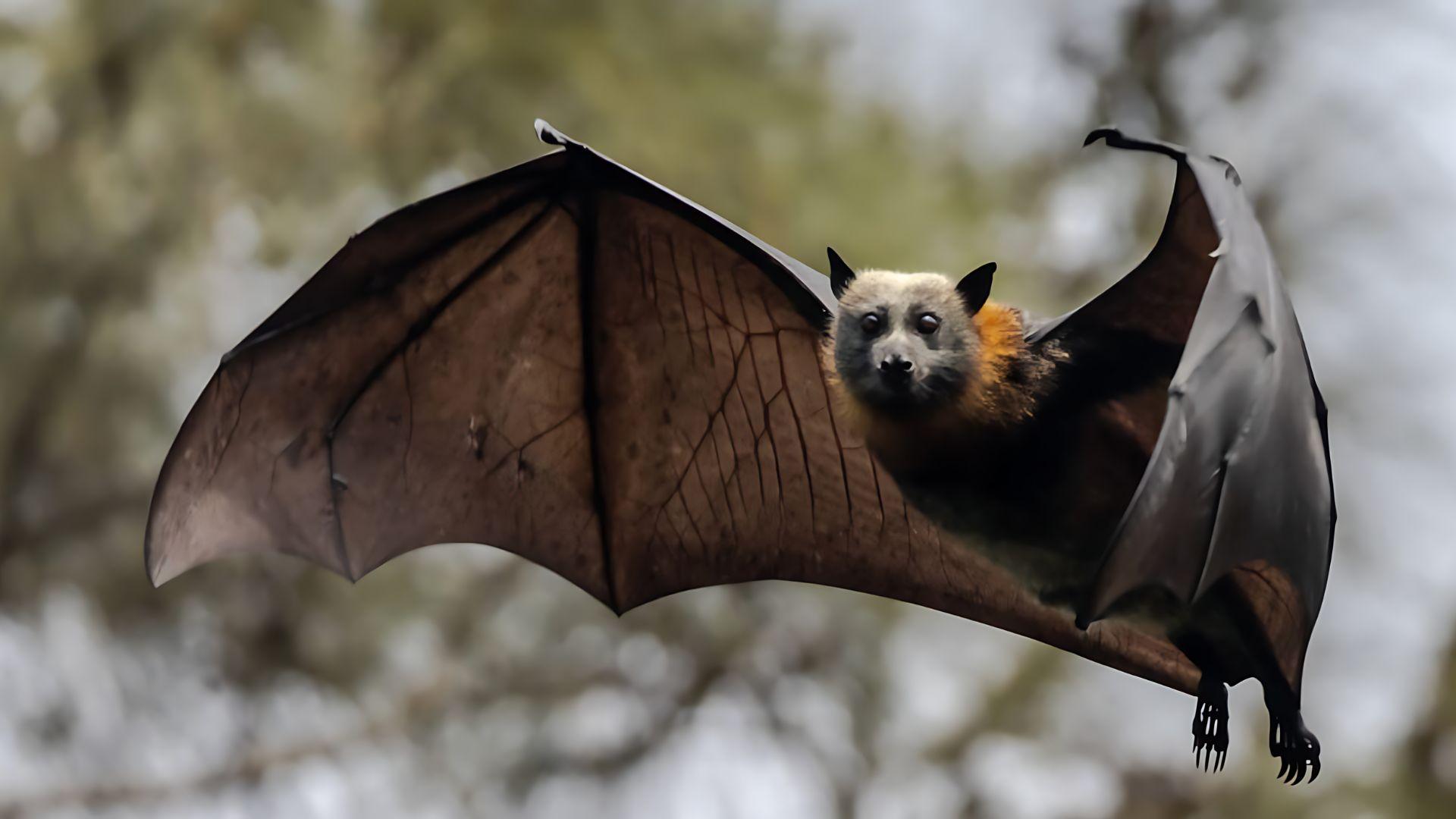
Bats are the only mammals capable of sustained flight. They are found worldwide and play essential roles in ecosystems as pollinators, seed dispersers, and insect controllers.
Bats use echolocation to navigate and hunt in the dark. They can have a wingspan of 2-7 inches and weigh 0.1-3.3 ounces.
- Region of Habitat: Worldwide
- Scientific Name: Chiroptera
- Place of Origin: Worldwide
- Feeding Habits: Insectivorous, frugivorous, and nectarivorous
- What Sound They Make: High-pitched echolocation calls
Fun Fact: There are over 1,300 species of bats, making up about 20% of all mammal species. Bats are crucial for pest control, consuming many insects each night.
13. Bearded Dragon
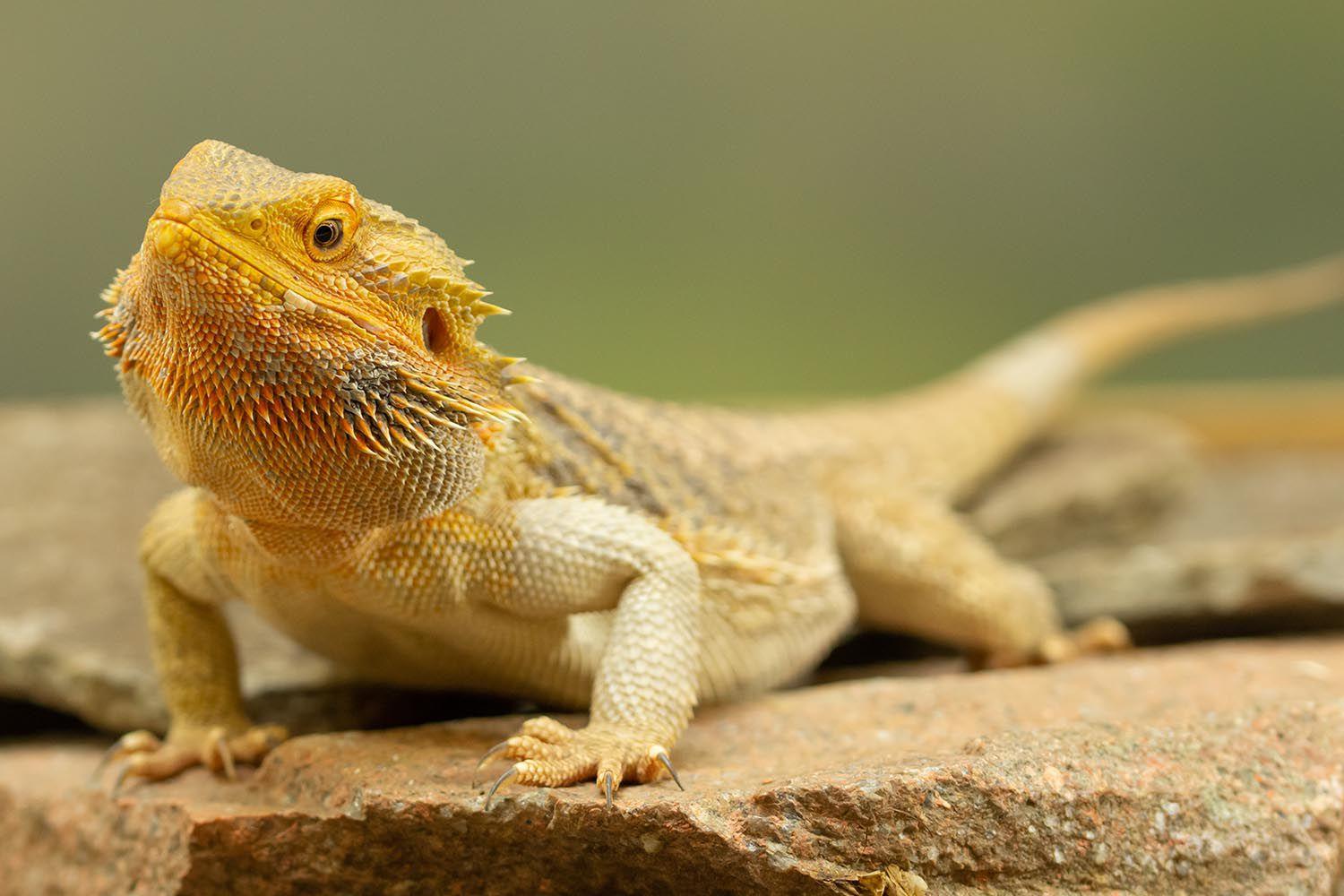
The Bearded Dragon is a lizard native to Australia. It is known for its calm behavior and unique communication ability through body language.
Bearded dragons are popular pets that puff out their” beards” when threatened. They can grow up to 24 inches long and weigh between 0.6 and 1.1 pounds.
- Region of Habitat: Australia
- Scientific Name: Pogona vitticeps
- Place of Origin: Australia
- Feeding Habits: Omnivorous, eating insects, fruits, and vegetables
- What Sound They Make: Silent
Fun Fact: Bearded dragons can change the color of their beard according to their mood. They also use arm-waving and head-bobbing to communicate with other bearded dragons.
14. Balkan Lynx
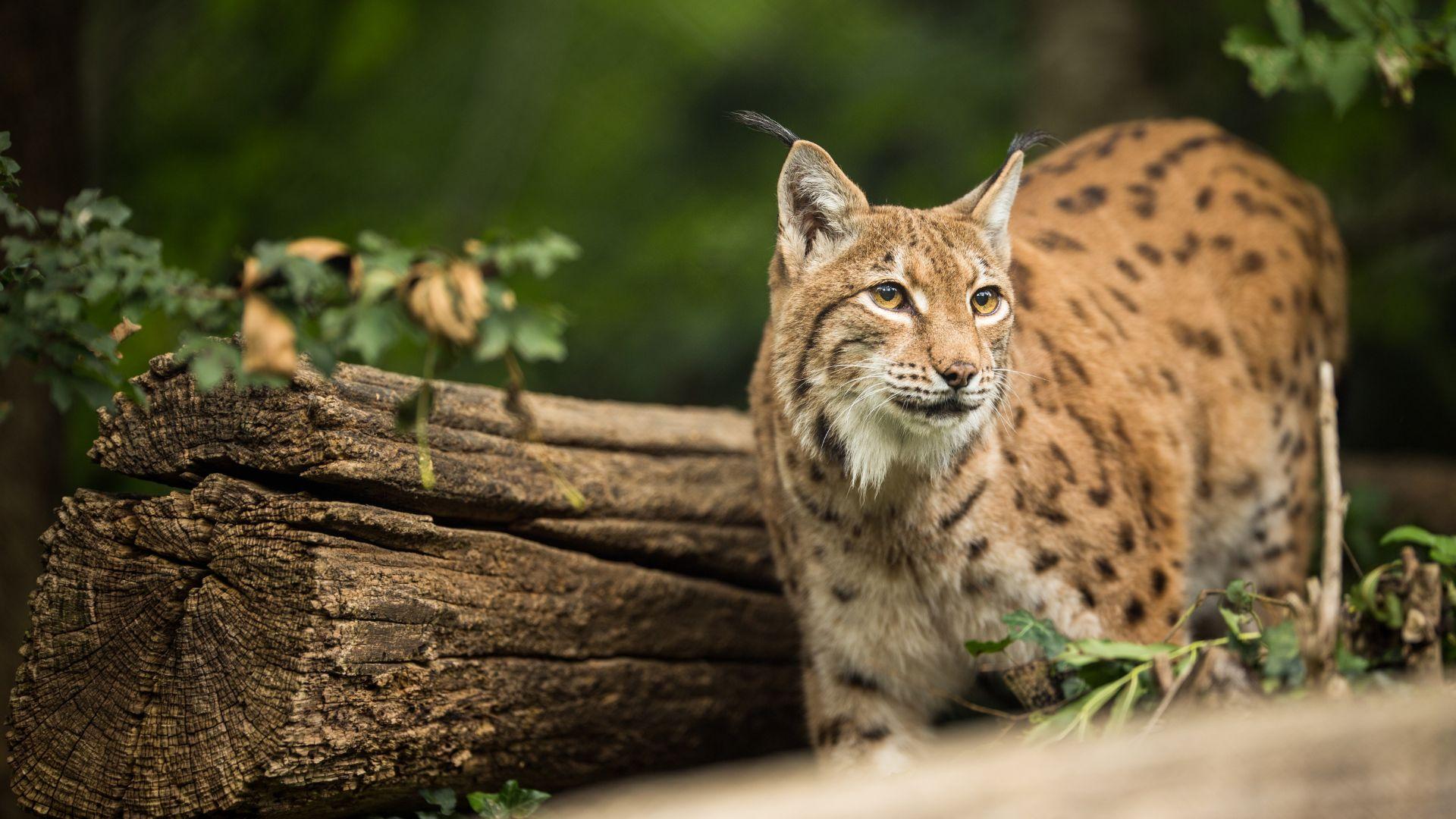
The Balkan Lynx is a subspecies of the Eurasian lynx, found primarily in the mountainous regions of the Balkans.
These inaccessible cats are known for their tufted ears, short tails, and powerful builds. They are solitary and primarily nocturnal, preying on small—to medium-sized mammals and birds.
Balkan lynxes can grow up to 3.6 feet long and weigh between 40-66 pounds.
- Region of Habitat: Balkans
- Scientific Name: Lynx lynx balcanicus
- Place of Origin: Balkans
- Feeding Habits: Carnivorous, eating deer, hares, and birds
- What Sound They Make: Growls, meows, and purrs
Fun Fact: The Balkan lynx is critically endangered, with an estimated population of fewer than 50 individuals. Conservation efforts are ongoing to protect their habitat and increase their numbers.
15. Beluga Whale

The Beluga Whale, also known as the white whale, is an Arctic and sub-Arctic cetacean known for its white coloration and distinctive melon-shaped head.
Belugas are highly social animals known for their vocalizations. They can grow 13-20 feet long and weigh between 1,100 and 2,500 pounds.
- Region of Habitat: Arctic and sub-Arctic regions
- Scientific Name: Delphinapterus leucas
- Place of Origin: Arctic and sub-Arctic regions
- Feeding Habits: Carnivorous, eating fish, crustaceans, and worms
- What Sound They Make: Whistles, clicks, and chirps
Fun Fact: Beluga whales can mimic various sounds, including human speech. Their flexible necks allow them to turn their heads in all directions.
16. Banded Palm Civet
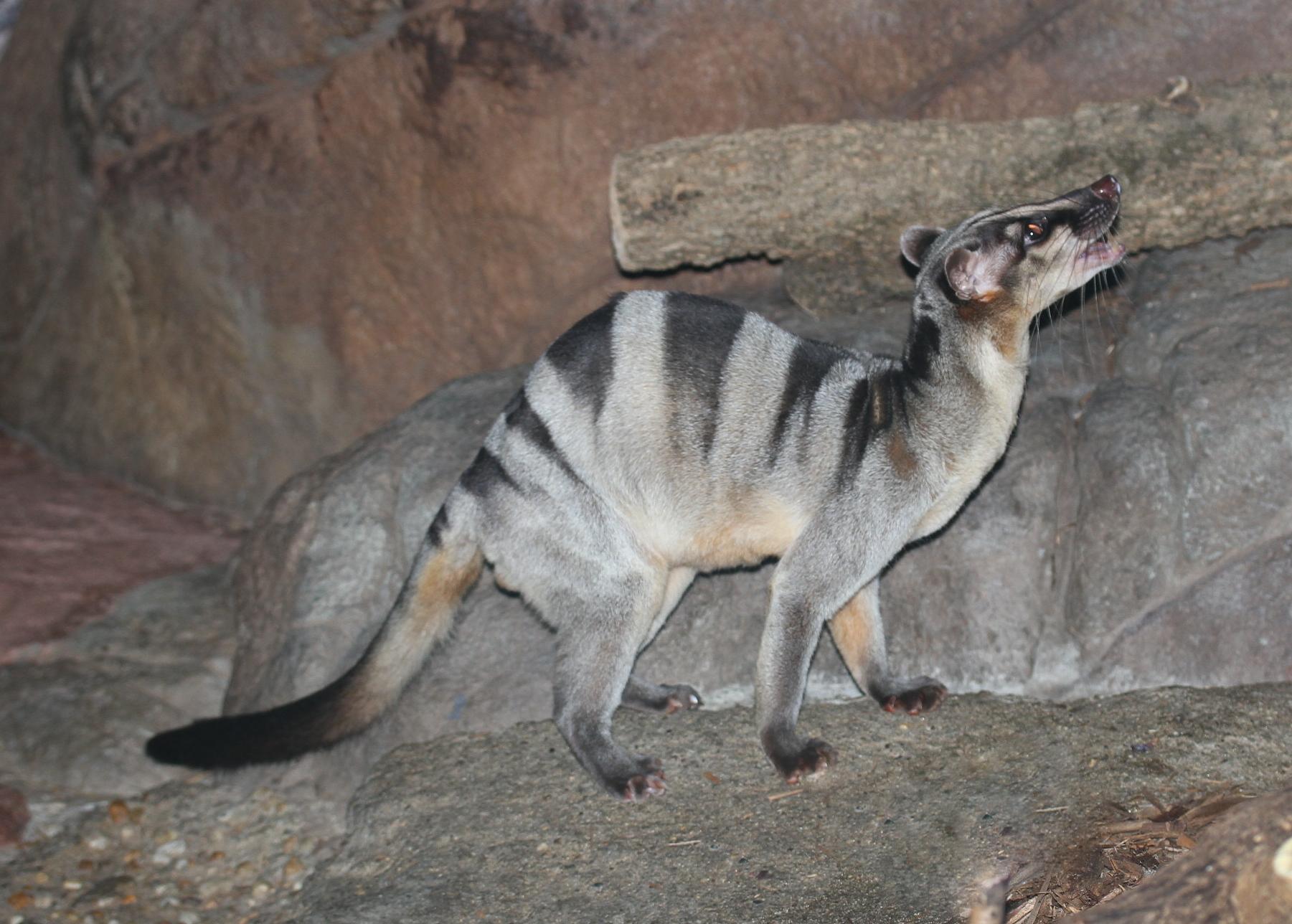
The Banded Palm Civet is a small carnivorous mammal found in Southeast Asia. Known for its striking banded fur pattern, this civet is arboreal and nocturnal, spending most of its time in trees.
It feeds on small animals, insects, and fruits. Banded palm civets can grow up to 2 feet long and weigh between 3-9 pounds.
- Region of Habitat: Southeast Asia
- Scientific Name: Hemigalus derbyanus
- Place of Origin: Southeast Asia
- Feeding Habits: Omnivorous, eating small animals, insects, and fruits
- What Sound They Make: Chirping and growling sounds
Fun Fact: Banded palm civets are excellent climbers, using their sharp claws and strong limbs to guide the forest canopy. They play a role in seed dispersal due to their fruit-eating habits.
17. Bison
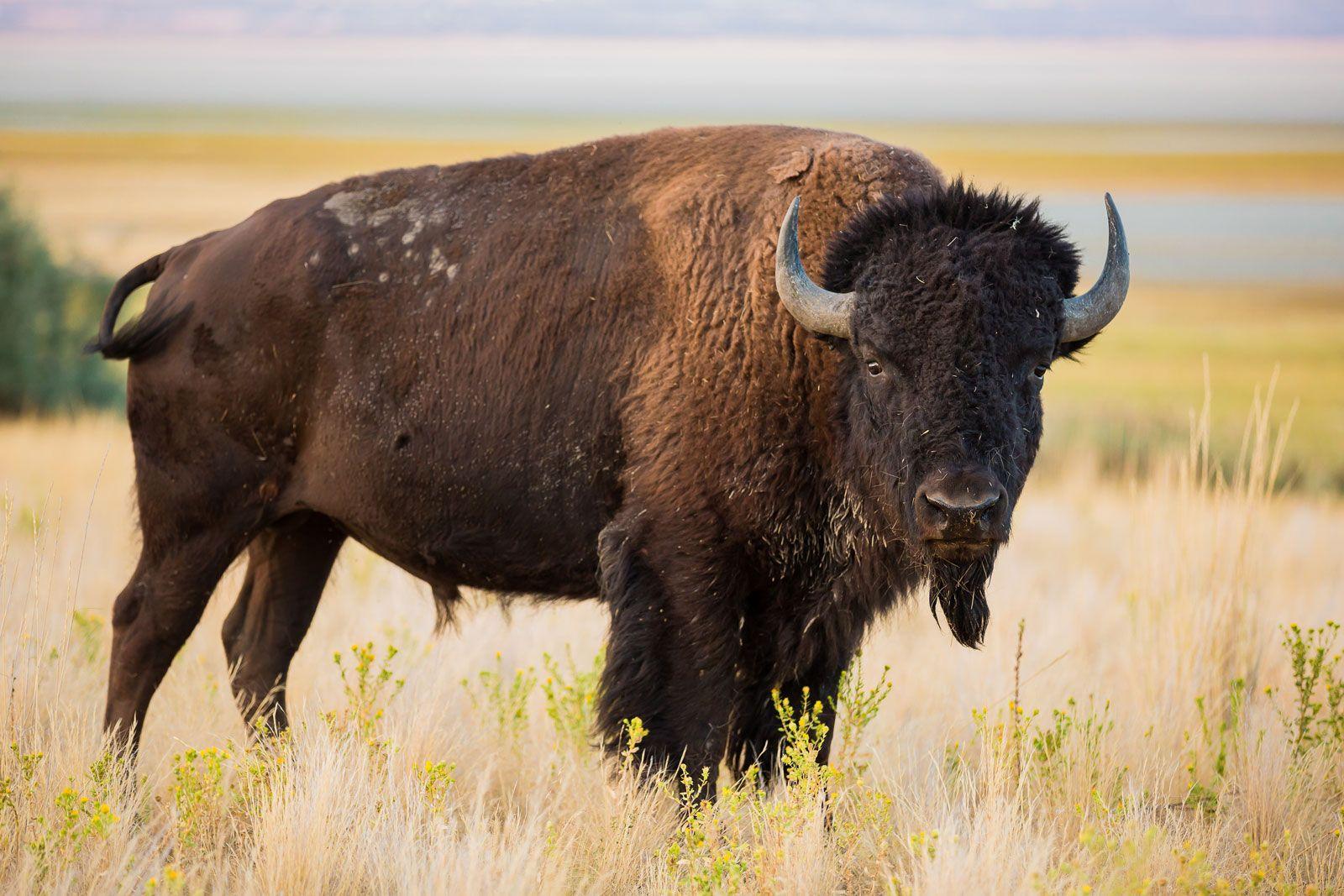
Bison, also known as buffalo, are large grazing mammals native to North America and Europe. They have a distinctive hump on their shoulders and a thick coat of fur.
Bison play a crucial role in maintaining the health of their grassland habitats. They can grow 6-11 feet long and weigh between 900 and 2,200 pounds.
- Region of Habitat: North America, Europe
- Scientific Name: Bison bison (American), Bison bonasus (European)
- Place of Origin: North America, Europe
- Feeding Habits: Herbivorous, eating grasses and sedges
- What Sound They Make: Grunts and snorts
Fun Fact: Bison can run at speeds up to 35 mph despite their large size. They are also capable of jumping over fences and other obstacles when necessary.
18. Black Bear
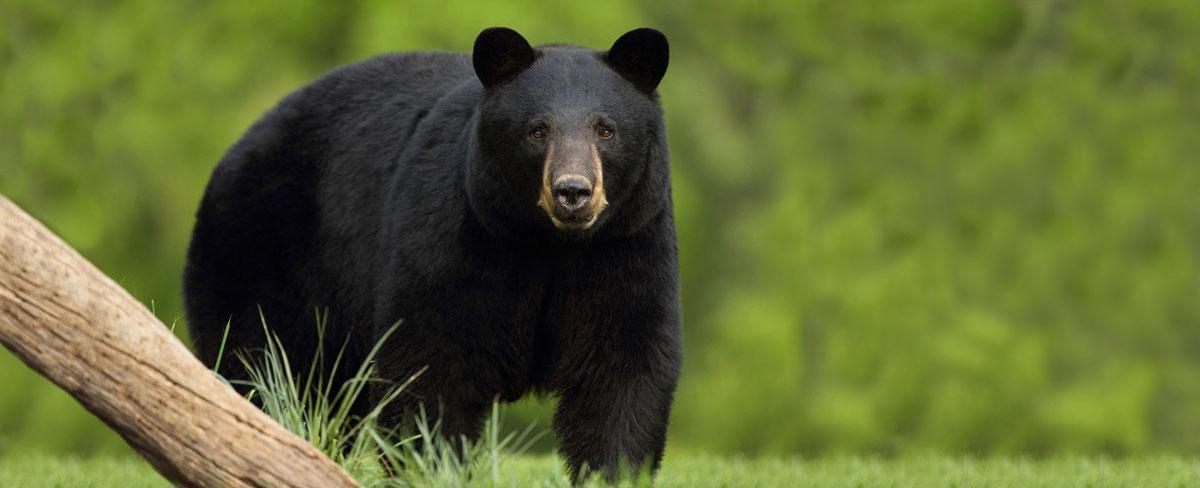
The Black Bear is the most common bear species in North America. Its diet includes fruits, nuts, insects, and small mammals.
Black bears are excellent climbers and swimmers. They can grow 4-7 feet long and weigh between 200 and 600 pounds.
- Region of Habitat: North America
- Scientific Name: Ursus americanus
- Place of Origin: North America
- Feeding Habits: Omnivorous, eating fruits, nuts, insects, and small mammals
- What Sound They Make: Grunts and growls
Fun Fact: Black bears can live up to 30 years in the wild. They have a keen sense of smell and can detect food from miles away.
19. Blue Whale
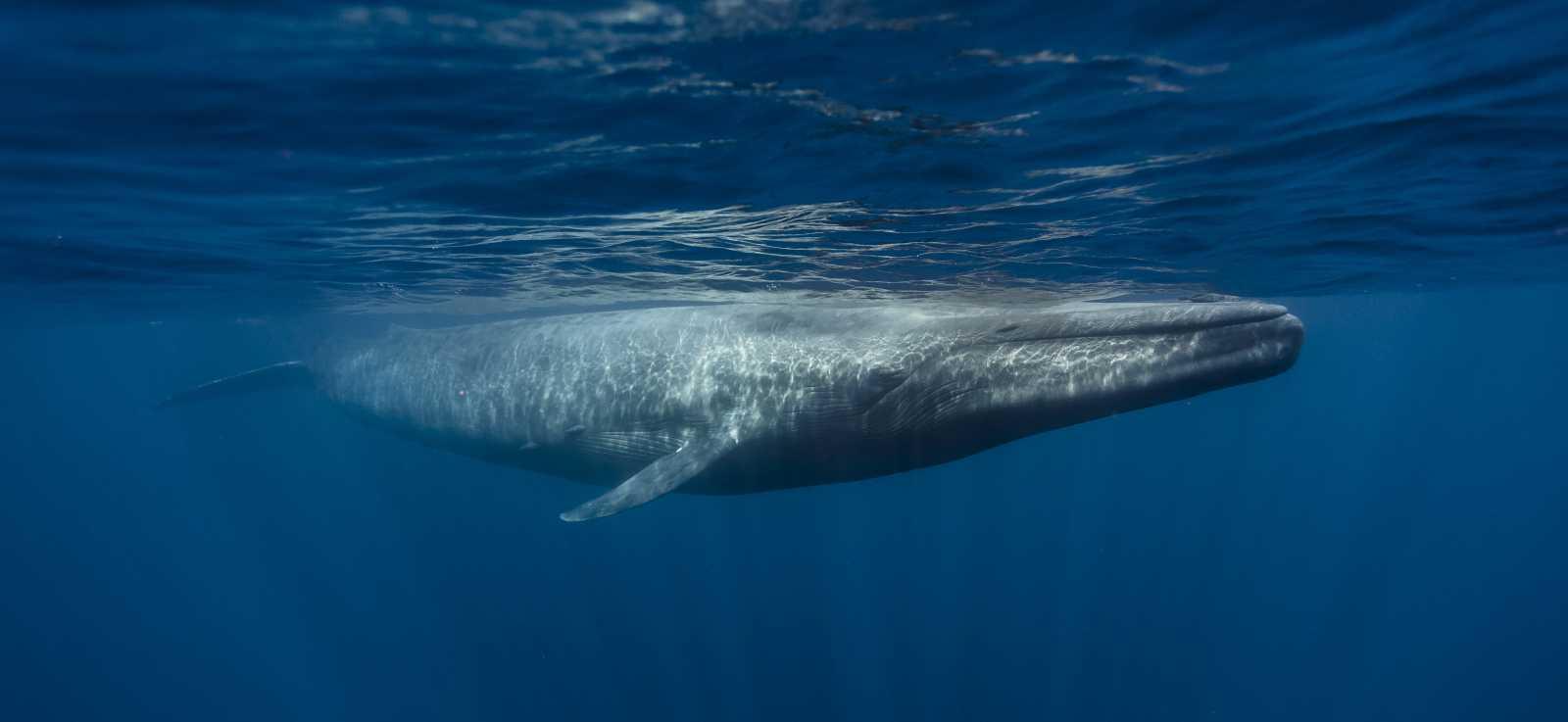
The Blue Whale is the largest animal ever known to have lived on Earth. These gentle giants are found in oceans worldwide and feed on tiny shrimp-like animals called krill.
Despite their massive size, blue whales are known for their melodic songs. They can grow up to 100 feet long and weigh around 200 tons.
- Region of Habitat: Worldwide oceans
- Scientific Name: Balaenoptera musculus
- Place of Origin: Worldwide oceans
- Feeding Habits: Filter feeder, eating krill
- What Sound They Make: Low-frequency vocalizations and songs
Fun Fact: A blue whale’s heart is the size of a small car and can weigh as much as 1,300 pounds. Their tongues alone can weigh as much as an elephant.
20. Booby

Boobies are large seabirds known for their bright blue feet and spectacular diving skills. They inhabit tropical and subtropical islands and coastlines and feed mainly on fish.
The name “booby” comes from the Spanish word “bobo,” meaning foolish, due to their clumsy movement on land. Boobies can grow 25-36 inches tall and weigh 3-4 pounds.
- Region of Habitat: Tropical and subtropical islands
- Scientific Name: Sula
- Place of Origin: Tropical and subtropical islands
- Feeding Habits: Carnivorous, eating fish and squid
- What Sound They Make: Squawking and grunting sounds
Fun Fact: Boobies’ blue feet are a result of carotenoid pigments obtained from their diet of fish. During courtship, males display their blue feet to attract females.
21. Bottlenose Dolphin

Bottlenose Dolphins are highly intelligent marine mammals known for their playful behavior and complex social structures.
They are found in warm and temperate seas worldwide and are easily recognizable by their curved dorsal fin and “smiling” appearance.
Bottlenose dolphins can grow 6-13 feet long and weigh between 330-1,400 pounds.
- Region of Habitat: Worldwide in warm and temperate seas
- Scientific Name: Tursiops truncatus
- Place of Origin: Warm and temperate seas
- Feeding Habits: Carnivorous, eating fish and squid
- What Sound They Make: Clicks, whistles, and burst-pulsed sounds
Fun Fact: Bottlenose dolphins use echolocation to hunt and navigate their environment.
They are also known for their cooperative hunting techniques, often working to herd fish into tight groups.
22. Boxer Dog

The Boxer Dog is a medium to large-sized breed known for its muscular build and strong jaws.
They are energetic, playful, and loyal companions. They are often used as working dogs in police and military roles.
Boxers are also known for their characteristic “boxing” stance when playing. They can grow 21-25 inches tall and weigh between 55 and 70 pounds.
- Region of Habitat: Domestic, worldwide
- Scientific Name: Canis lupus familiaris
- Place of Origin: Germany
- Feeding Habits: Omnivorous, eating commercial dog food and meat
- What Sound They Make: Barking and growling
Fun Fact: Boxers are descendants of the extinct Bullenbeisser, a German hunting dog.
They are known for their patience and protective nature, making them excellent family pets.
23. Brazilian Terrier

The Brazilian Terrier is a small, lively dog breed known for its agility and high energy levels. It is popular in its native Brazil for its hunting abilities and as an affectionate family pet.
Brazilian Terriers have a distinctive tricolor coat and a sleek, muscular build. They can grow 14-16 inches tall and weigh between 15-22 pounds.
- Region of Habitat: Brazil
- Scientific Name: Canis lupus familiaris
- Place of Origin: Brazil
- Feeding Habits: Omnivorous, eating commercial dog food and meat
- What Sound They Make: Barking and growling
Fun Fact: Brazilian Terriers are excellent at catching rats and other small pests. They are known for their agility and can perform various tricks and tasks.
24. Brushtail Possum
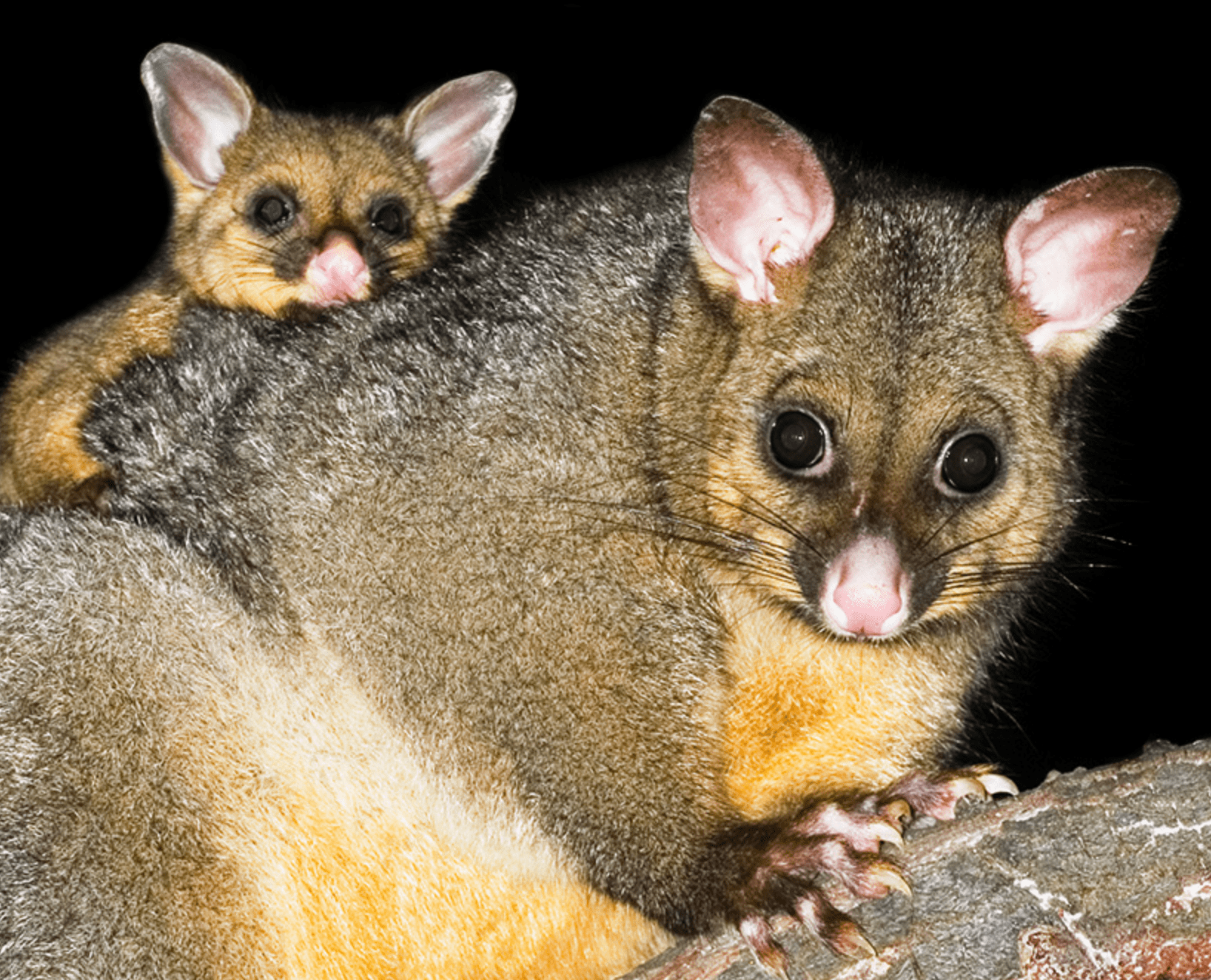
The Brushtail Possum is a nocturnal marsupial native to Australia. It is known for its prehensile tail, which it uses for climbing and grasping branches.
Brushtail possums are adaptable and can be found in various habitats, including urban areas.
They can grow 12-20 inches long and weigh between 4-11 pounds.
- Region of Habitat: Australia
- Scientific Name: Trichosurus vulpecula
- Place of Origin: Australia
- Feeding Habits: Omnivorous, eating leaves, fruits, and small animals
- What Sound They Make: Hissing and growling sounds
Fun Fact: Brushtail possums are often seen in urban areas where they can become a nuisance by raiding garbage bins. They are also known for their territorial behavior and can be aggressive towards intruders.
25. Budgerigar
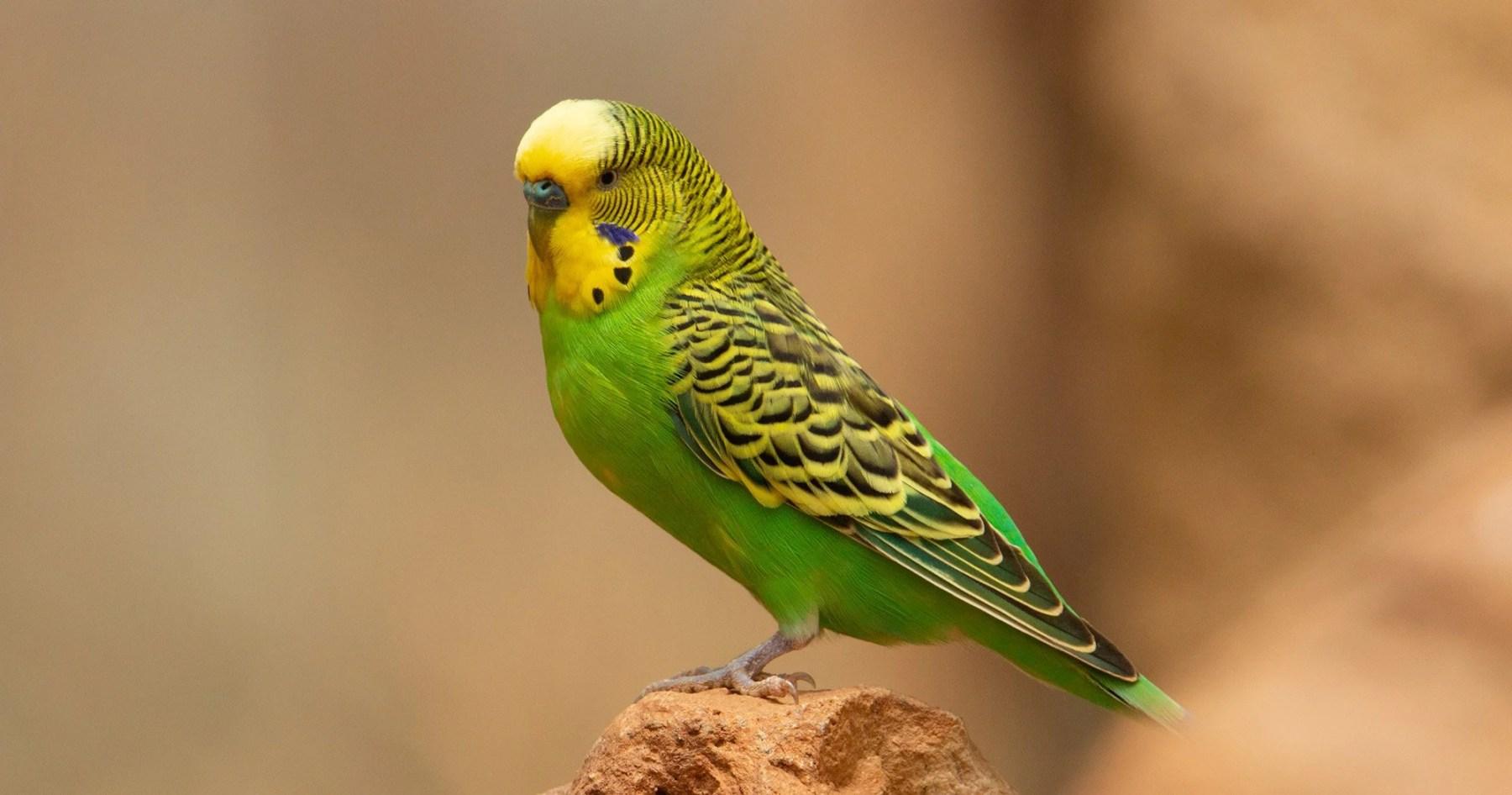
The Budgerigar, the common parakeet or budgie, is a small, colorful bird native to Australia.
They are popular pets worldwide due to their bright plumage and ability to mimic human speech.
Budgerigars are social and enjoy living in flocks. They can grow 7-8 inches tall and weigh 1-1.4 ounces.
- Region of Habitat: Australia
- Scientific Name: Melopsittacus undulatus
- Place of Origin: Australia
- Feeding Habits: Herbivorous, eating seeds and fruits
- What Sound They Make: Chirping and mimicking sounds
Fun Fact: Budgerigars are one of the few bird species that can learn to mimic human speech. They are also known for their playful nature and enjoy interacting with their owners and other birds.
26. Bull Shark
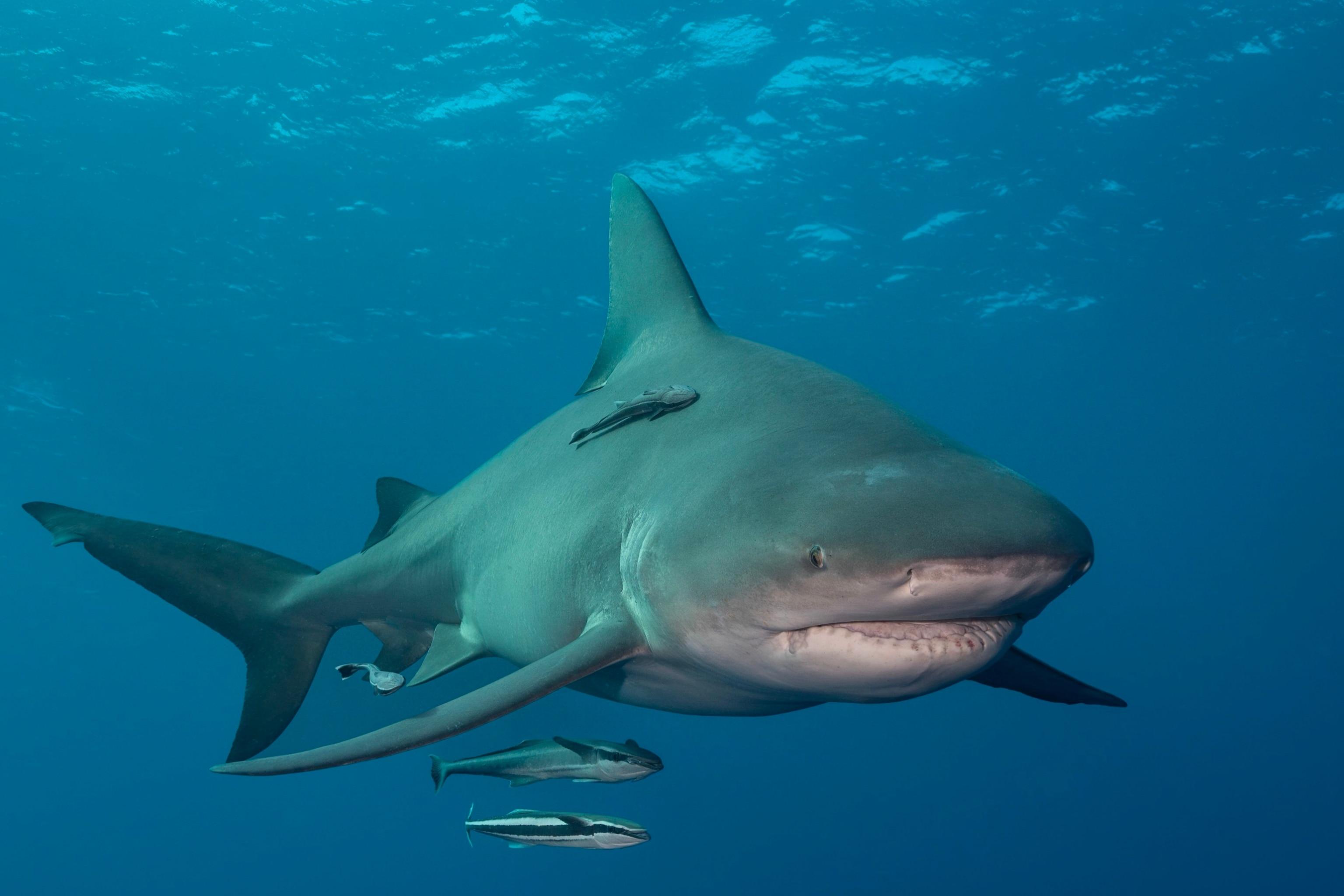
Bull Sharks are large, aggressive sharks found in warm coastal waters worldwide. They are known for their ability to tolerate both salt and freshwater and often swim far up rivers.
Bull sharks are responsible for the majority of near-shore shark attacks on humans. They can grow 7-11.5 feet long and weigh between 200 and 500 pounds.
- Region of Habitat: Worldwide in warm coastal waters
- Scientific Name: Carcharhinus leucas
- Place of Origin: Warm coastal waters
- Feeding Habits: Carnivorous, eating fish, dolphins, and other sharks
- What Sound They Make: Silent
Fun Fact: Bull sharks can live in saltwater and freshwater environments, including rivers and lakes.
They are also known for their aggressive behavior and are considered one of the most dangerous sharks to humans.
27. Bullfrog
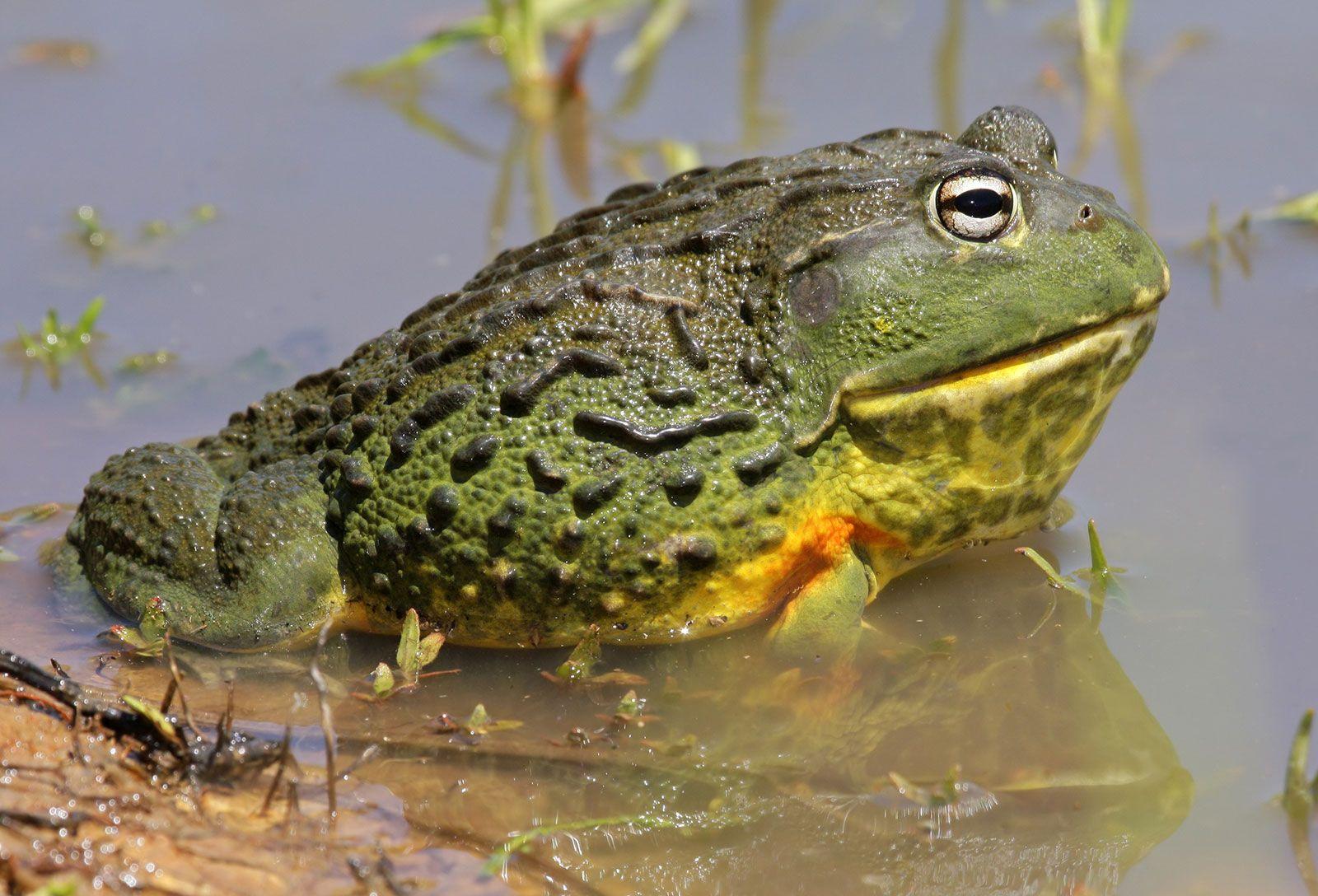
Bullfrogs are large, aquatic frogs known for their deep, resonant croaks. They are native to North America but have been introduced to other parts of the world.
Bullfrogs are opportunistic feeders who eat almost anything they can catch and swallow. They can grow 3.5-6 inches long and weigh between 1-1.5 pounds.
- Region of Habitat: North America, introduced elsewhere
- Scientific Name: Lithobates catesbeianus
- Place of Origin: North America
- Feeding Habits: Carnivorous, eating insects, small mammals, and birds
- What Sound They Make: Deep croaking sounds
Fun Fact: Bullfrogs can leap distances of up to 3 feet in a single bound. They are also known for their powerful hind legs, which allow them to jump great distances.
28. Butterfly
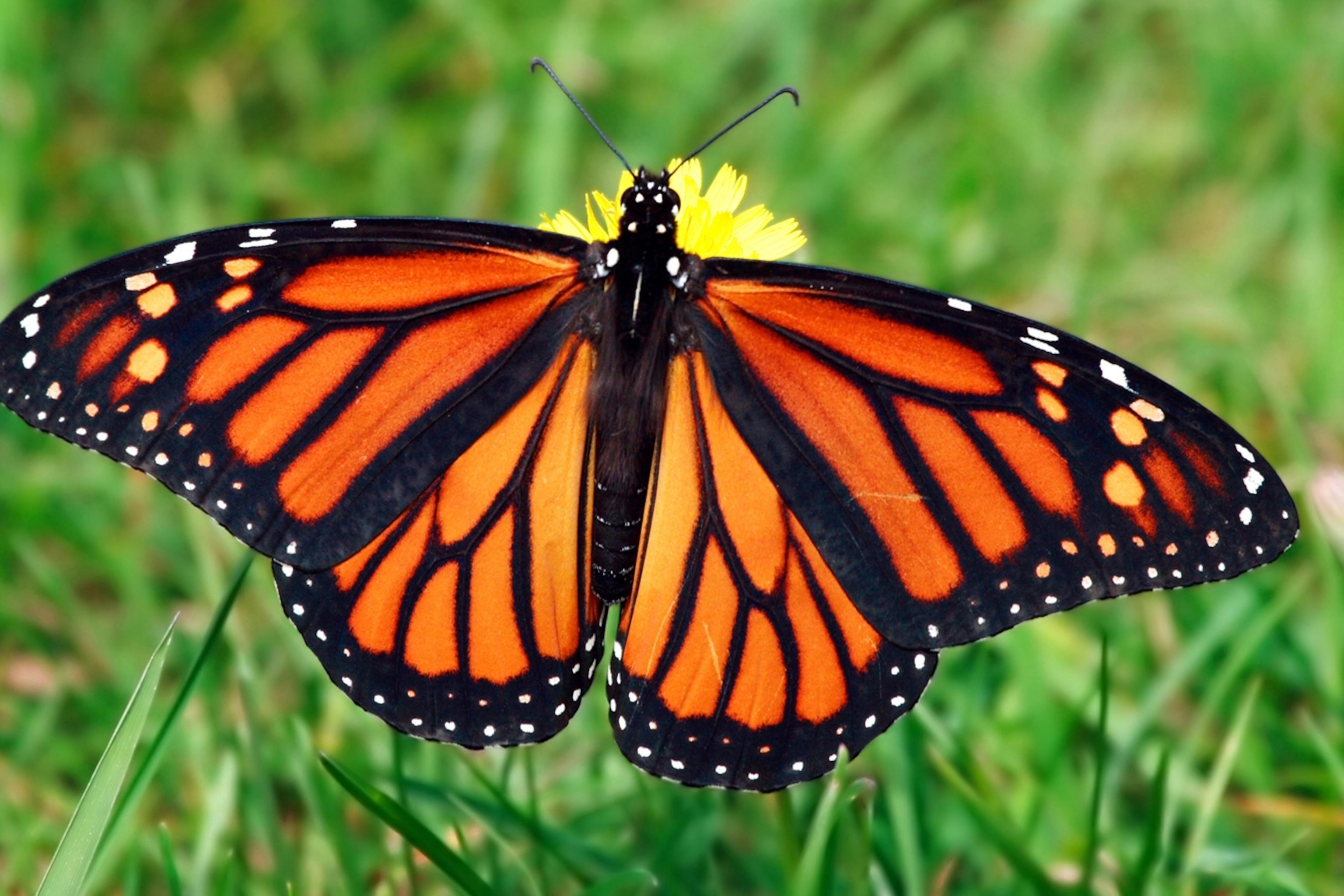
Butterflies are insects known for their vibrant wings and graceful flight. They undergo complete metamorphosis, transitioning from caterpillar to adult.
Butterflies are important pollinators and are found in diverse habitats worldwide. They can have a wingspan of 0.5-12 inches and weigh between 0.002-0.04 ounces.
- Region of Habitat: Worldwide
- Scientific Name: Rhopalocera
- Place of Origin: Worldwide
- Feeding Habits: Herbivorous, feeding on nectar and plant sap
- What Sound They Make: Silent
Fun Fact: Some butterflies migrate long distances, with the monarch butterfly traveling up to 3,000 miles. They are also known for their role in pollination, helping to fertilize many plants.
29. Baboon Spider
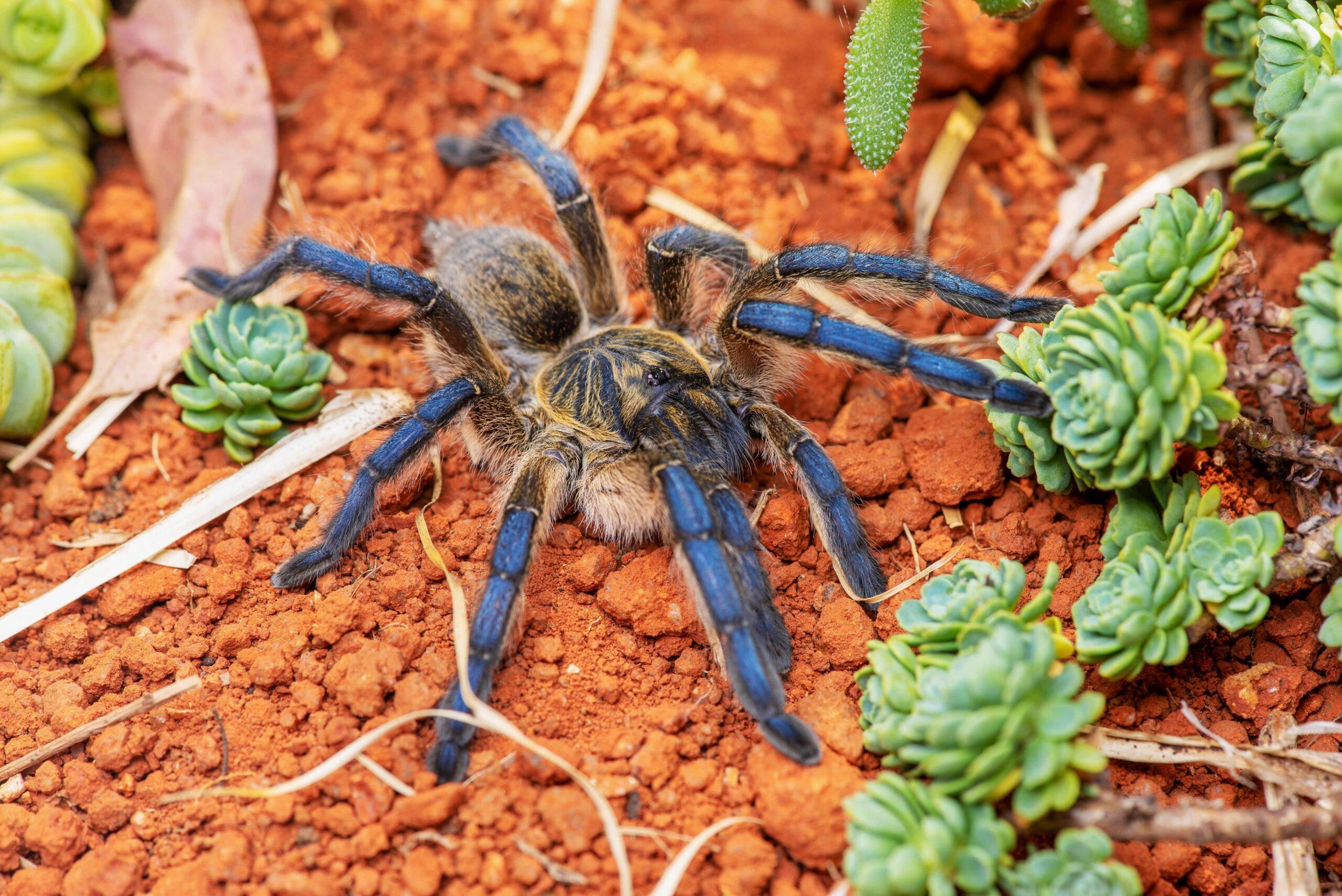
Baboon Spiders are large, hairy tarantulas found in Africa. They are named for their hairy appearance and large size, reminiscent of baboons.
Baboon spiders live in caves and are known for their potent venom, which they use to subdue prey. They can grow to 6 inches long and weigh up to 3 ounces.
- Region of Habitat: Africa
- Scientific Name: Harpactirinae
- Place of Origin: Africa
- Feeding Habits: Carnivorous, eating insects and small animals
- What Sound They Make: Silent
Fun Fact: Baboon spiders can live up to 25 years in captivity. They are also known for their defensive behavior, using their venomous fangs to ward off predators.
30. Bandicoot Rat
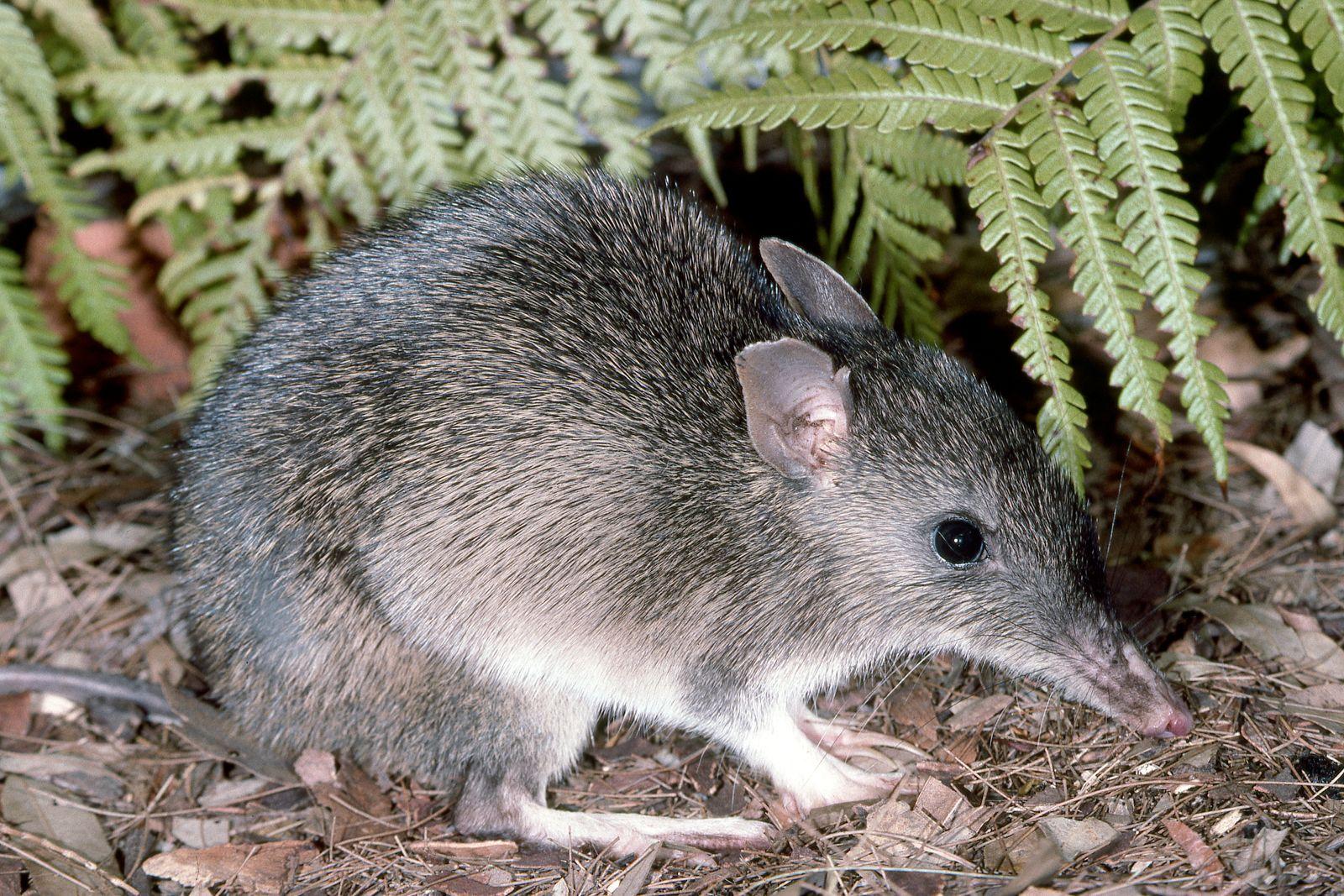
Bandicoot Rats are large rodents found in South Asia. They are named for their resemblance to the Australian bandicoot.
Bandicoot rats are known for burrowing habits and are considered pests in agricultural areas. They can grow 8-10 inches long and weigh between 1 and 2 pounds.
- Region of Habitat: South Asia
- Scientific Name: Bandicota bengalensis
- Place of Origin: South Asia
- Feeding Habits: Omnivorous, eating grains, fruits, and small animals
- What Sound They Make: Squeaking and scratching sounds
Fun Fact: Bandicoot rats can cause significant damage to crops and are known to tunnel through irrigation canals. They can also carry diseases, posing a risk to human health.
31. Banteng
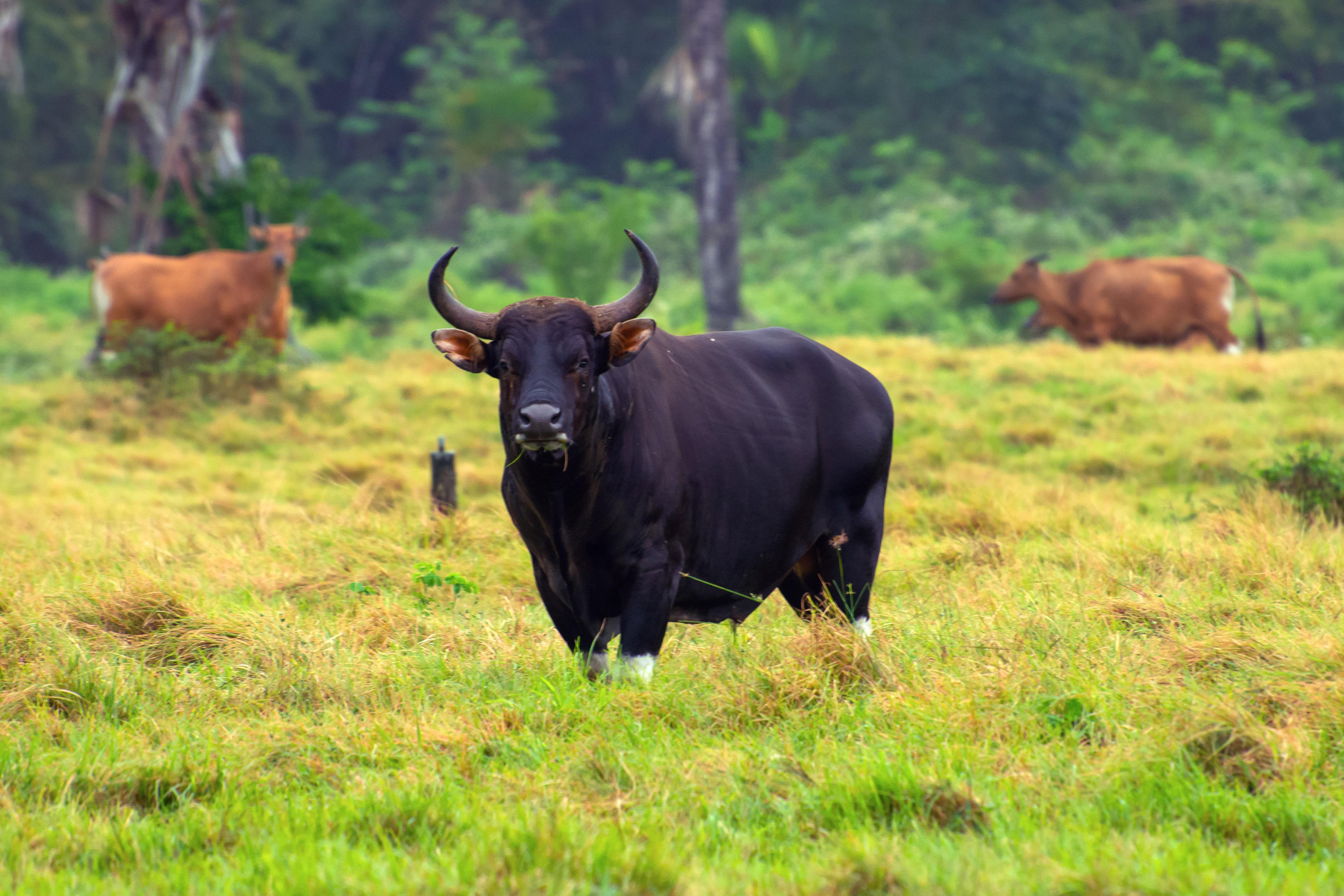
The Banteng is a wild cattle species found in Southeast Asia. It is known for its impressive horns and distinctive markings.
Bantengs are social animals that live in herds and are important for their ecological role in maintaining grassland habitats.
They can grow 5-6 feet tall and weigh between 1,300-2,000 pounds.
- Region of Habitat: Southeast Asia
- Scientific Name: Bos javanicus
- Place of Origin: Southeast Asia
- Feeding Habits: Herbivorous, eating grasses and leaves
- What Sound They Make: Low mooing sounds
Fun Fact: Bantengs are known for their ability to thrive in wild and domesticated environments. They are also important for maintaining the biodiversity of their habitats.
32. Barasingha
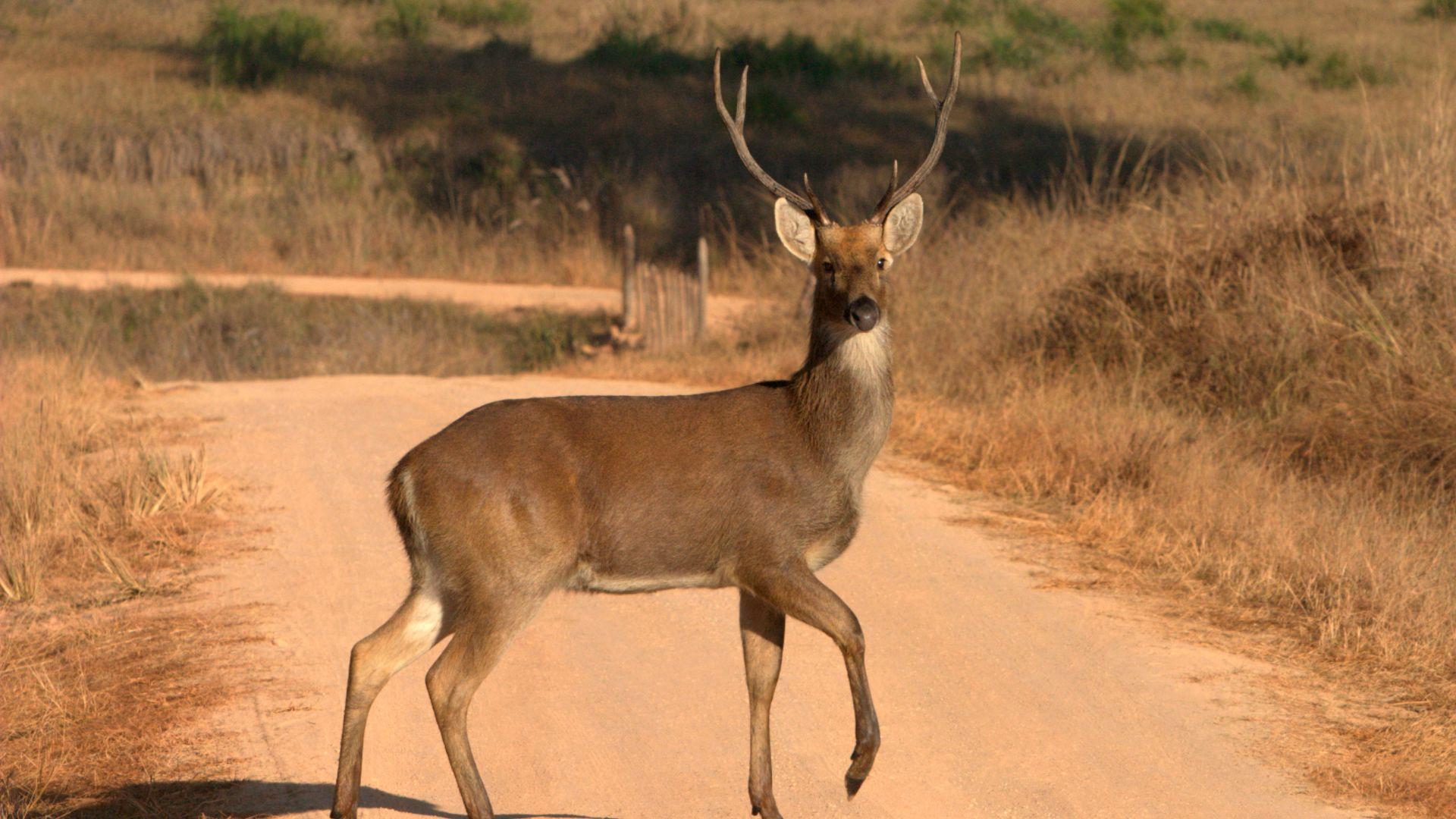
The Barasingha, also known as the swamp deer, is a large species native to the Indian subcontinent.
Barasinghas are distinguished by their long, slender antlers, which can have up to 12 tines. They are primarily found in grasslands and wetlands.
They can grow 3.6-4.6 feet at the shoulder and weigh between 375-620 pounds.
- Region of Habitat: Indian subcontinent
- Scientific Name: Rucervus duvaucelii
- Place of Origin: Indian subcontinent
- Feeding Habits: Herbivorous, eating grasses and aquatic plants
- What Sound They Make: Bellowing sounds during the mating season
Fun Fact: Barasingha means “twelve-tined” in Hindi, referring to the multiple points on their antlers. They are also known for their elaborate courtship displays.
33. Barbary Sheep
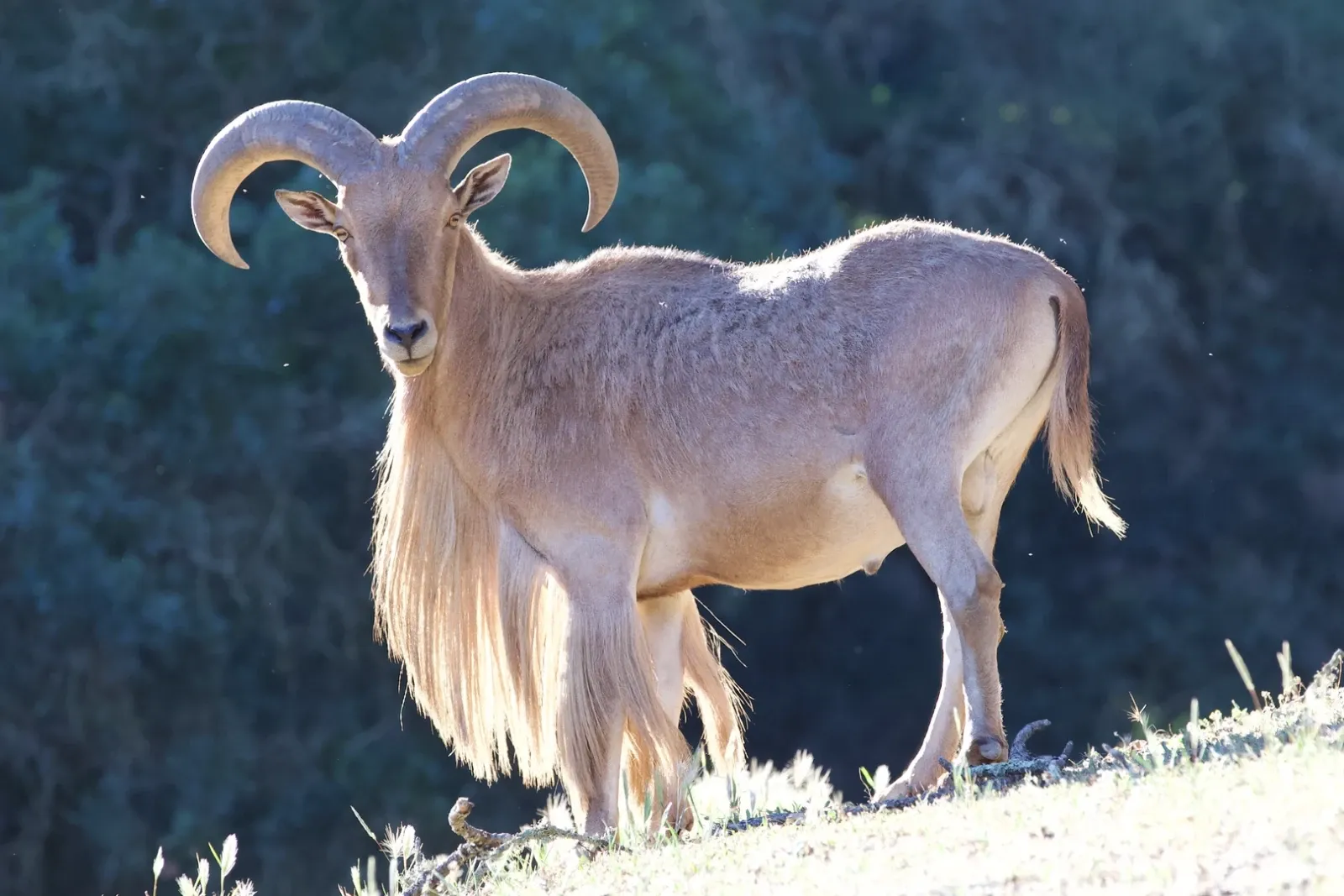
The barbary sheep, also known as the aoudad, is a wild sheep species native to North Africa. It is known for its thick, curved horns and rugged build.
Barbary sheep are well-adapted to arid environments and can go without water for long periods. They can grow 2.5-3.5 feet at the shoulder and weigh between 90-320 pounds.
- Region of Habitat: North Africa
- Scientific Name: Ammotragus lervia
- Place of Origin: North Africa
- Feeding Habits: Herbivorous, eating grasses and shrubs
- What Sound They Make: Bleating and grunting sounds
Fun Fact: Barbary sheep can jump up to 7 feet in a single bound to escape predators. They are also known for their ability to climb steep, rocky terrain.
34. Barn Owl
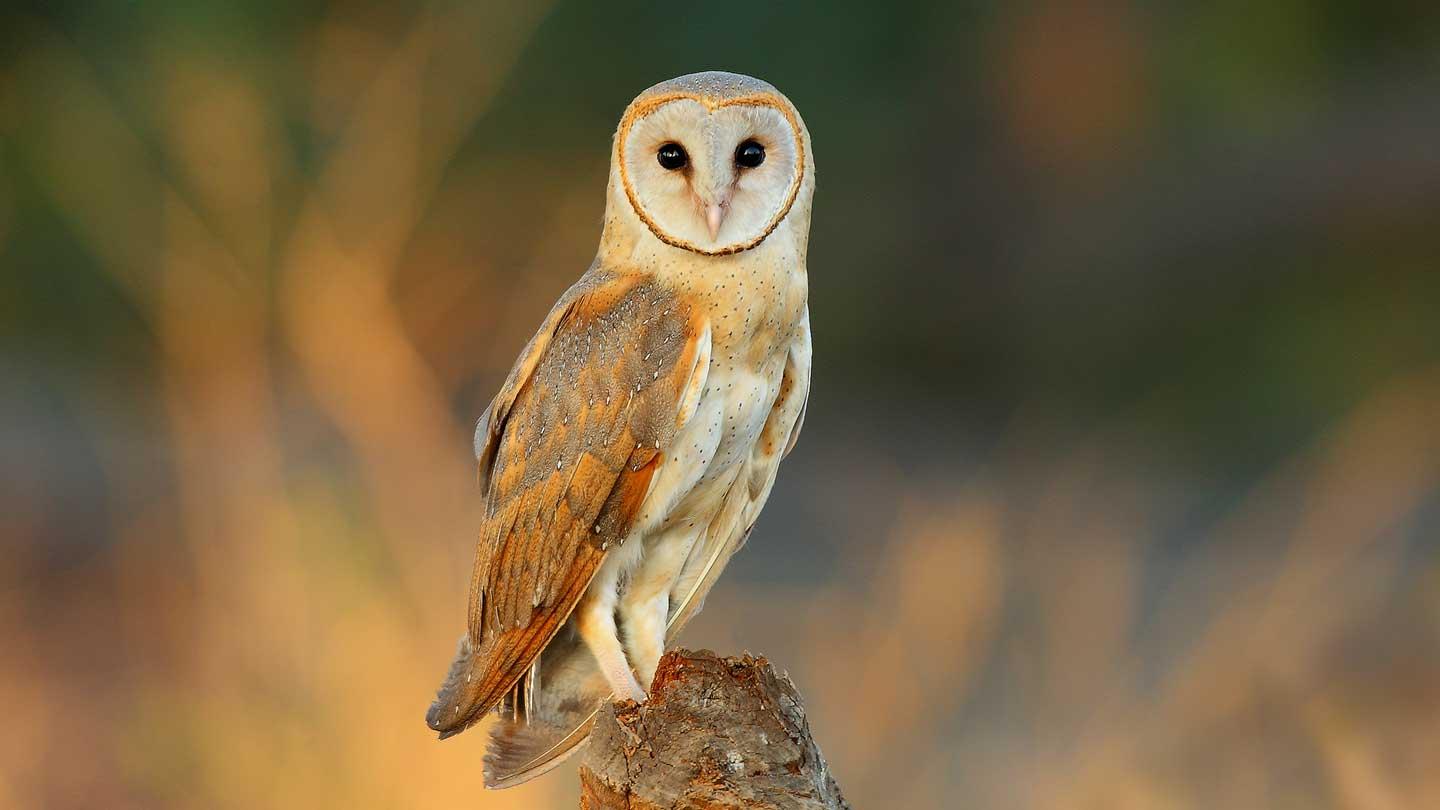
The Barn Owl is a medium-sized owl known for its distinctive heart-shaped face and silent flight.
It is found worldwide and is known for its excellent hunting skills. Barn owls prey mainly on rodents. They can grow 13-15 inches tall and weigh between 0.9-1.4 pounds.
- Region of Habitat: Worldwide
- Scientific Name: Tyto alba
- Place of Origin: Worldwide
- Feeding Habits: Carnivorous, eating rodents and small mammals
- What Sound They Make: Screeching and hissing sounds
Fun Fact: Barn owls have exceptional hearing and can locate prey in complete darkness. Their silent flight is due to the unique structure of their feathers.
35. Barn Swallow
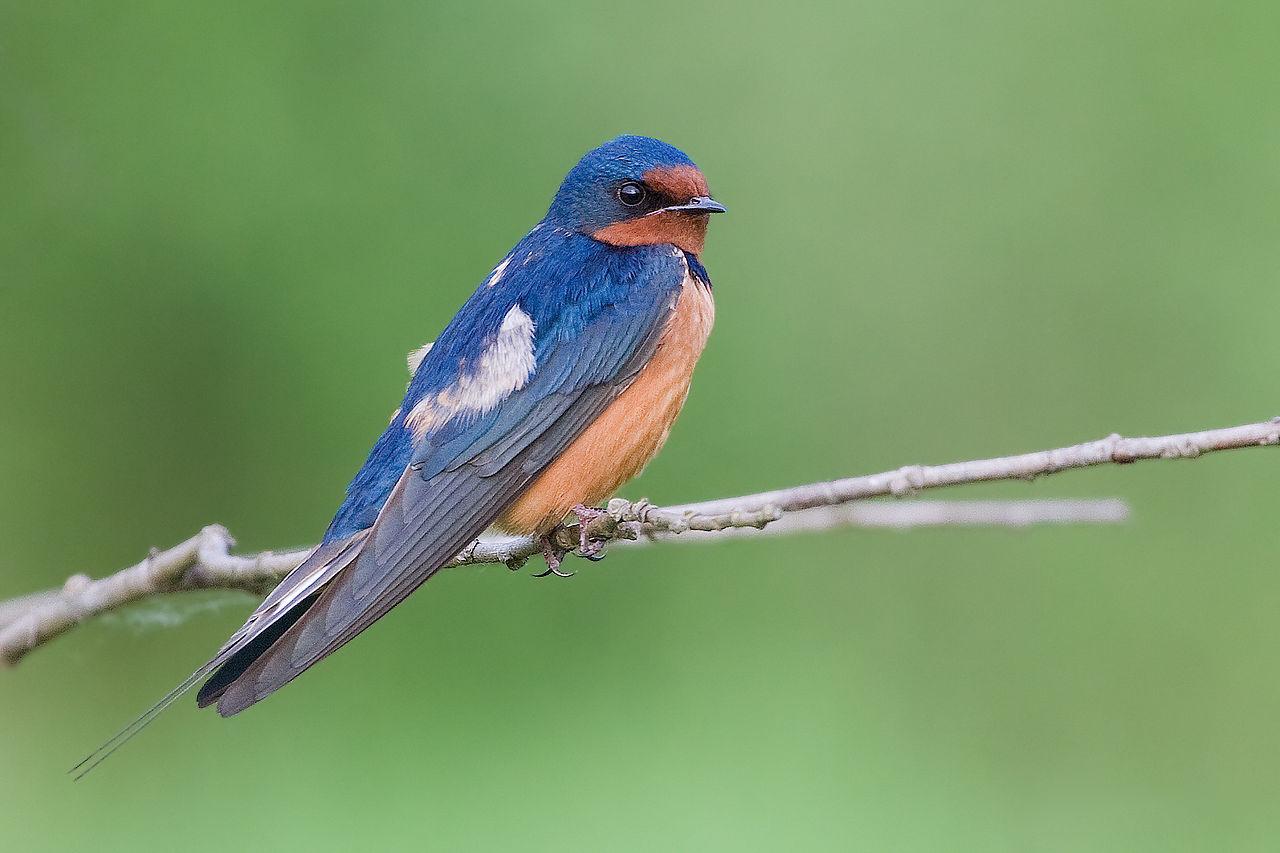
The Barn Swallow is a migratory bird known for its long, forked tail and agile flight. It is found worldwide and can catch insects on the wing.
Barn swallows build mud nests on human-made structures. They can grow 6-7 inches long and weigh between 0.6-0.7 ounces.
- Region of Habitat: Worldwide
- Scientific Name: Hirundo rustica
- Place of Origin: Worldwide
- Feeding Habits: Insectivorous, eating flying insects
- What Sound They Make: Chirping and twittering sounds
Fun Fact: Barn swallows migrate long distances, traveling from North America to South America each year. They are also known for their close association with human habitats.
36. Basilisk Lizard
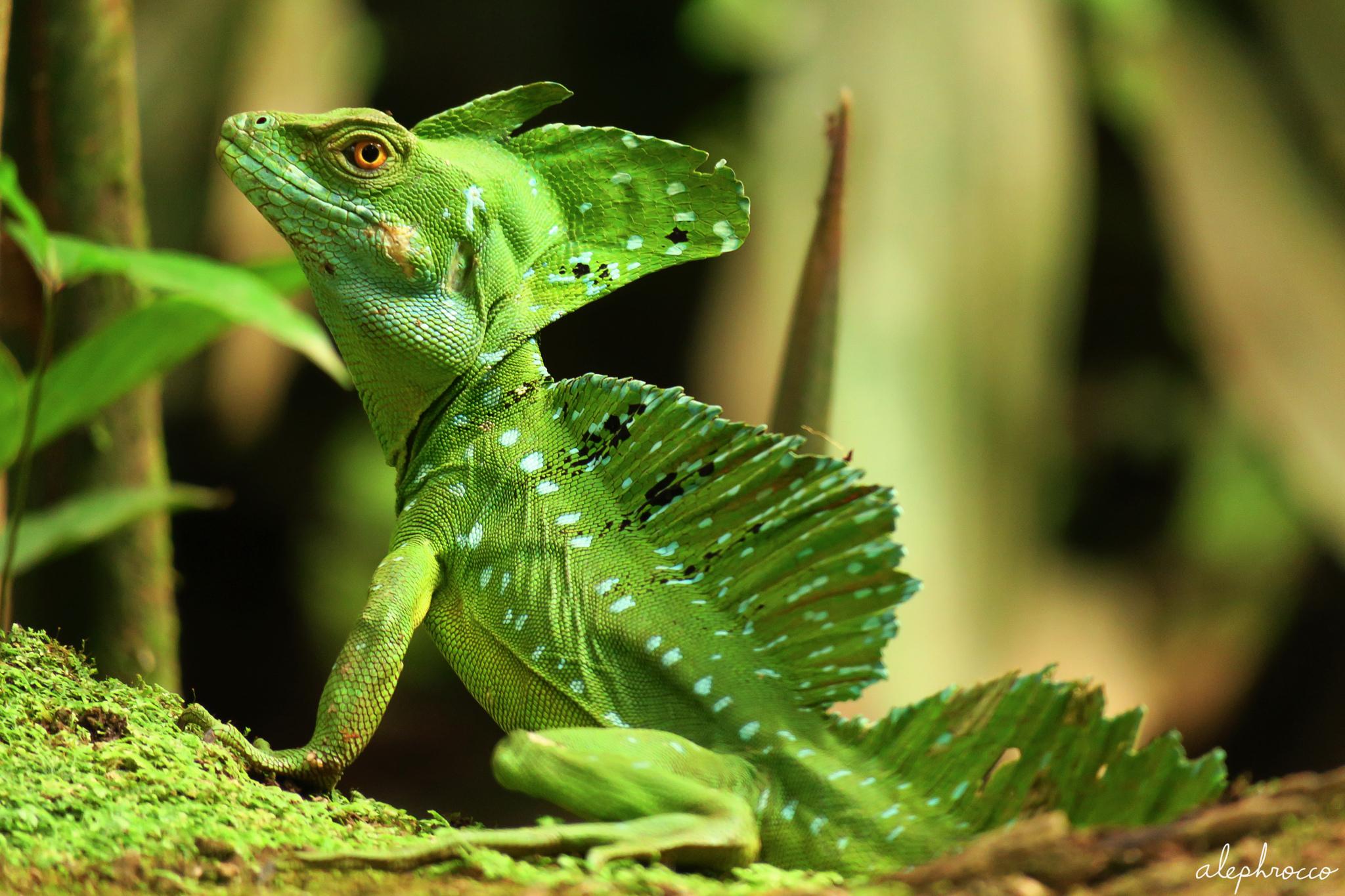
The Basilisk Lizard, also known as the Jesus Christ Lizard, is famous for its ability to run on water.
Basilisk lizards are native to Central and South America and are known for their impressive speed and agility. They can grow up to 3 feet long and weigh between 0.5 and 1 pound.
- Region of Habitat: Central and South America
- Scientific Name: Basiliscus
- Place of Origin: Central and South America
- Feeding Habits: Omnivorous, eating insects, fruits, and small vertebrates
- What Sound They Make: Silent
Fun Fact: Basilisk lizards can run on water for short distances to escape predators. They use their long toes and lightweight bodies to create a surface tension that allows them to “walk” on water.
37. Basking Shark
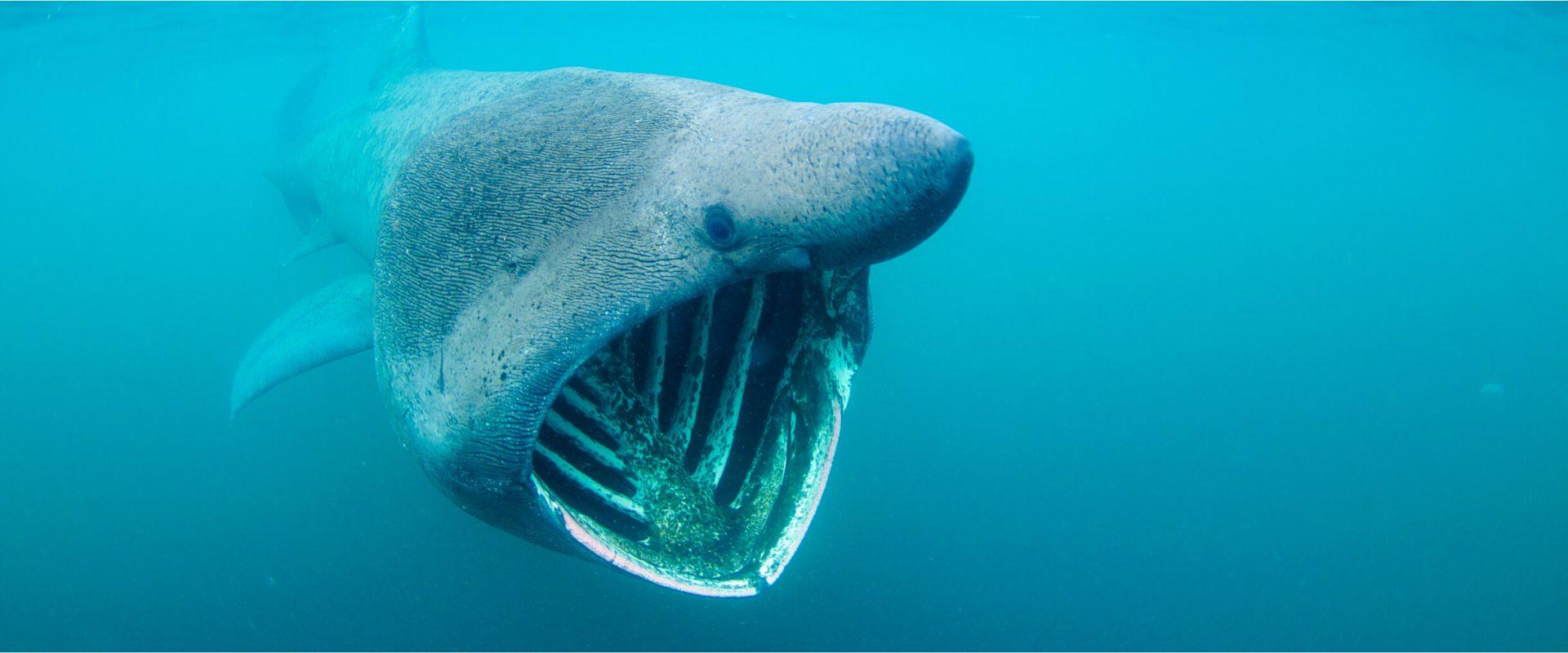
The Basking Shark is the second-largest living shark, known for its filter-feeding habits.
They are found in temperate oceans and are known for their gentle nature and massive mouths, which they use to filter plankton from the water.
Basking sharks can grow up to 40 feet long and weigh around 8,000 pounds.
- Region of Habitat: Temperate oceans
- Scientific Name: Cetorhinus maximus
- Place of Origin: Temperate oceans
- Feeding Habits: Filter feeder, eating plankton
- What Sound They Make: Silent
Fun Fact: Basking sharks filter up to 2,000 tons of water per hour to feed on plankton. Despite their massive size, they are gentle giants and pose no threat to humans.
38. Bat-Eared Fox
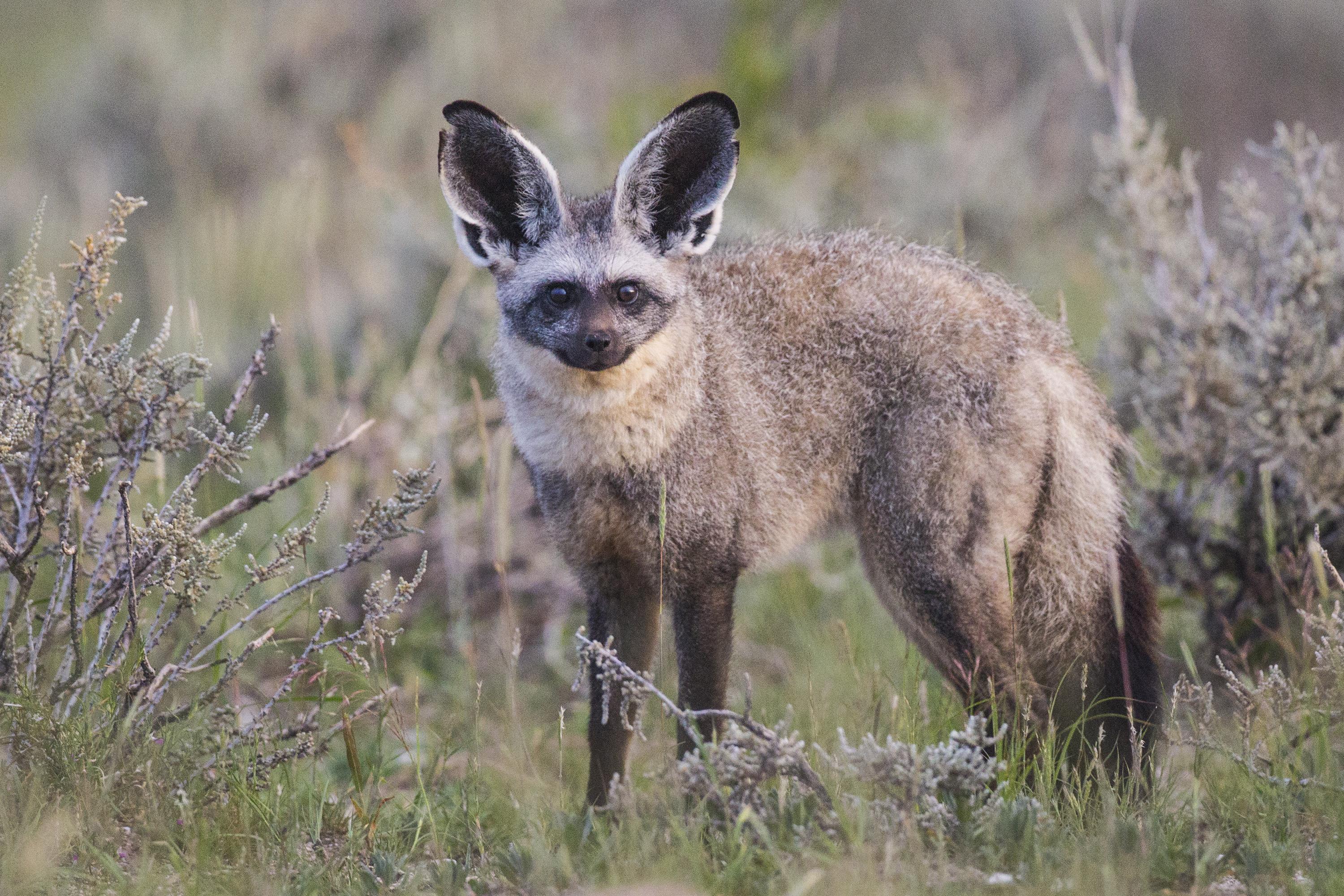
The Bat-Eared Fox is a small fox species native to Africa known for its large ears. These ears help the fox hear insects underground, which comprise a large part of its diet.
Bat-eared foxes are social animals that live in family groups. They can grow 18-26 inches long and weigh between 6-12 pounds.
- Region of Habitat: Africa
- Scientific Name: Otocyon megalotis
- Place of Origin: Africa
- Feeding Habits: Insectivorous, eating insects and small mammals
- What Sound They Make: Barking and growling sounds
Fun Fact: Bat-eared foxes can run up to 35 mph to escape predators. They are also known for controlling insect populations, especially termites.
39. Beagle

The Beagle is a small to medium-sized dog breed known for its excellent sense of smell and tracking abilities.
It is popular as a pet and hunting dog and is known for its friendly and curious nature. Beagles can grow 13-15 inches tall and weigh between 20-25 pounds.
- Region of Habitat: Domestic, worldwide
- Scientific Name: Canis lupus familiaris
- Place of Origin: United Kingdom
- Feeding Habits: Omnivorous, eating commercial dog food and meat
- What Sound They Make: Barking and howling
Fun Fact: Beagles have over 220 million scent receptors, making them among the best scent hounds. They are also known for their gentle temperament and are often used as therapy dogs.
40. Bearded Vulture
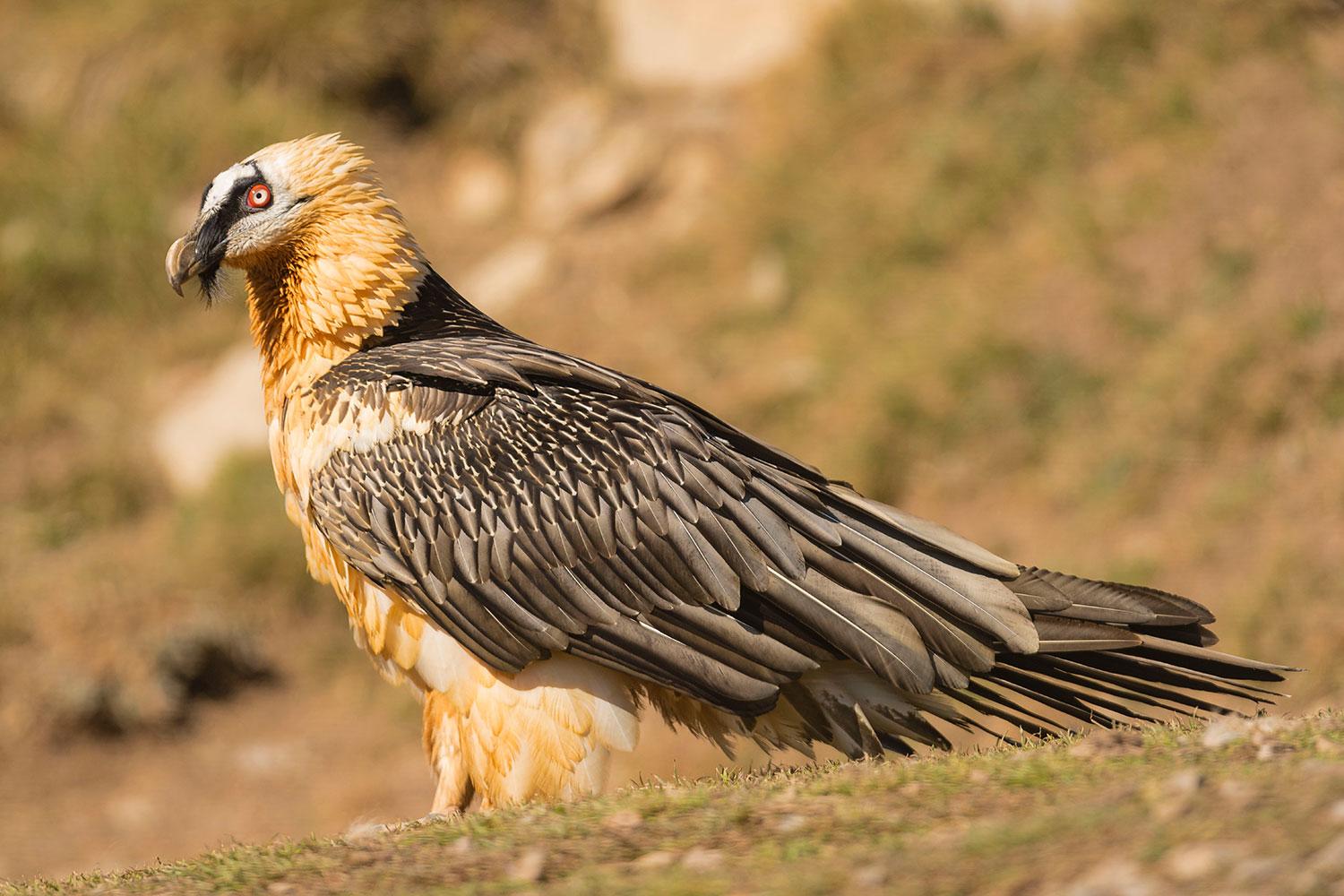
The Bearded Vulture, also known as the lammergeier, is a large bird of prey found in mountainous regions of Europe, Africa, and Asia.
They are known for their diet, which consists mainly of bones. Bearded vultures can grow 37-49 inches tall and weigh 10-15 pounds.
- Region of Habitat: Europe, Africa, Asia
- Scientific Name: Gypaetus barbatus
- Place of Origin: Europe, Africa, Asia
- Feeding Habits: Scavenger, eating bones and carrion
- What Sound They Make: Whistling and croaking sounds
Fun Fact: Bearded vultures are among the few birds that eat bones as their primary diet. They drop bones from great heights to break them into smaller, more manageable pieces.
41. Beaver
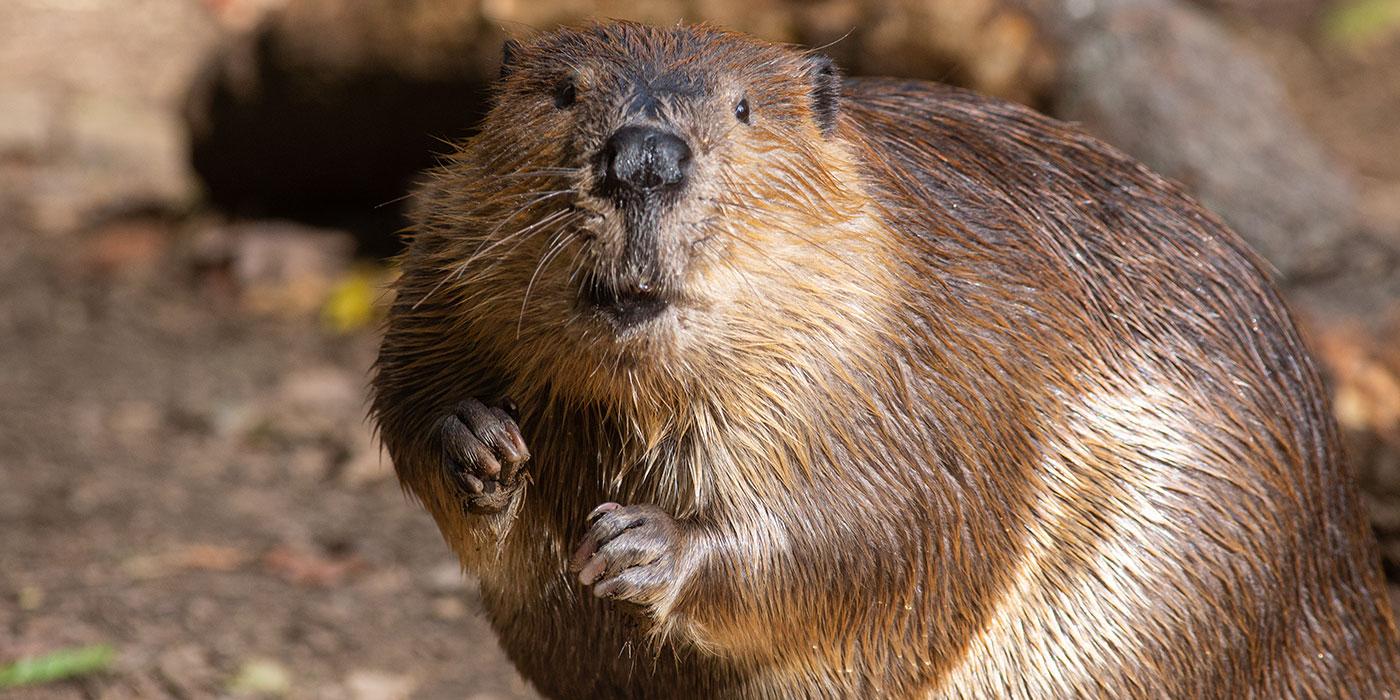
Beavers are large, semi-aquatic rodents known for building dams, canals, and lodges.
They are found in North America and Europe and are crucial in maintaining wetland ecosystems. Beavers can grow 3-4 feet long and weigh 35-60 pounds.
- Region of Habitat: North America, Europe
- Scientific Name: Castor
- Place of Origin: North America, Europe
- Feeding Habits: Herbivorous, eating bark, leaves, and aquatic plants
- What Sound They Make: Slapping tails on water and low grunts
Fun Fact: Beavers’ dams create wetlands that provide habitat for many other species. Their activities help improve water quality and prevent soil erosion.
42. Bee-Eater
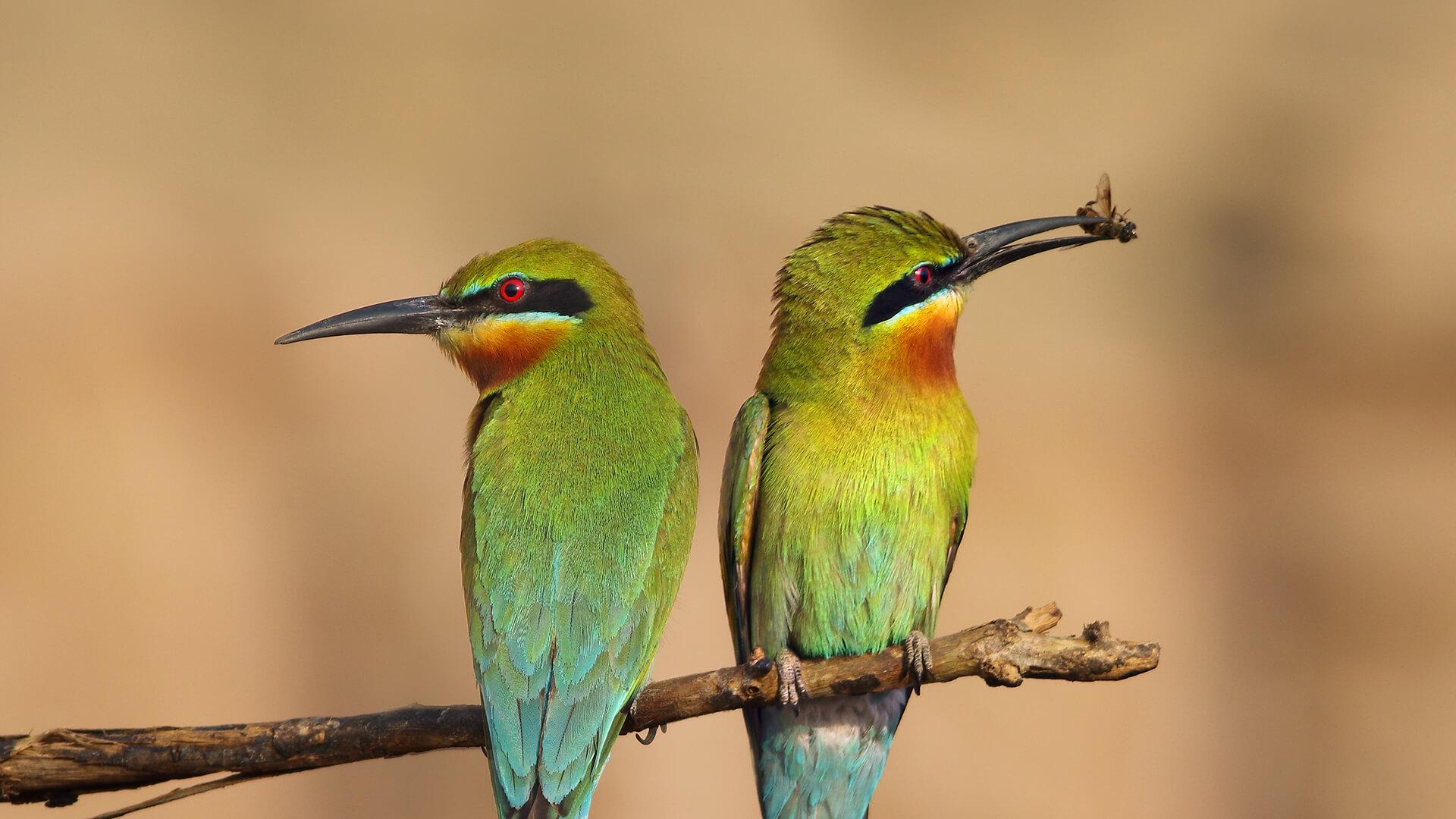
Bee-eaters are colorful birds found in Africa, Europe, and Asia. They are known for their slender bodies, long beaks, and vibrant plumage.
Bee-eaters catch bees and other flying insects in mid-air. They can grow 8-12 inches long and weigh between 0.6-1.6 ounces.
- Region of Habitat: Africa, Europe, Asia
- Scientific Name: Meropidae
- Place of Origin: Africa, Europe, Asia
- Feeding Habits: Insectivorous, eating bees and other flying insects
- What Sound They Make: Chirping and trilling sounds
Fun Fact: Bee-eaters remove the stingers from bees before eating them by repeatedly hitting them against a hard surface. They are also known for their cooperative breeding behavior.
43. Beluga Sturgeon
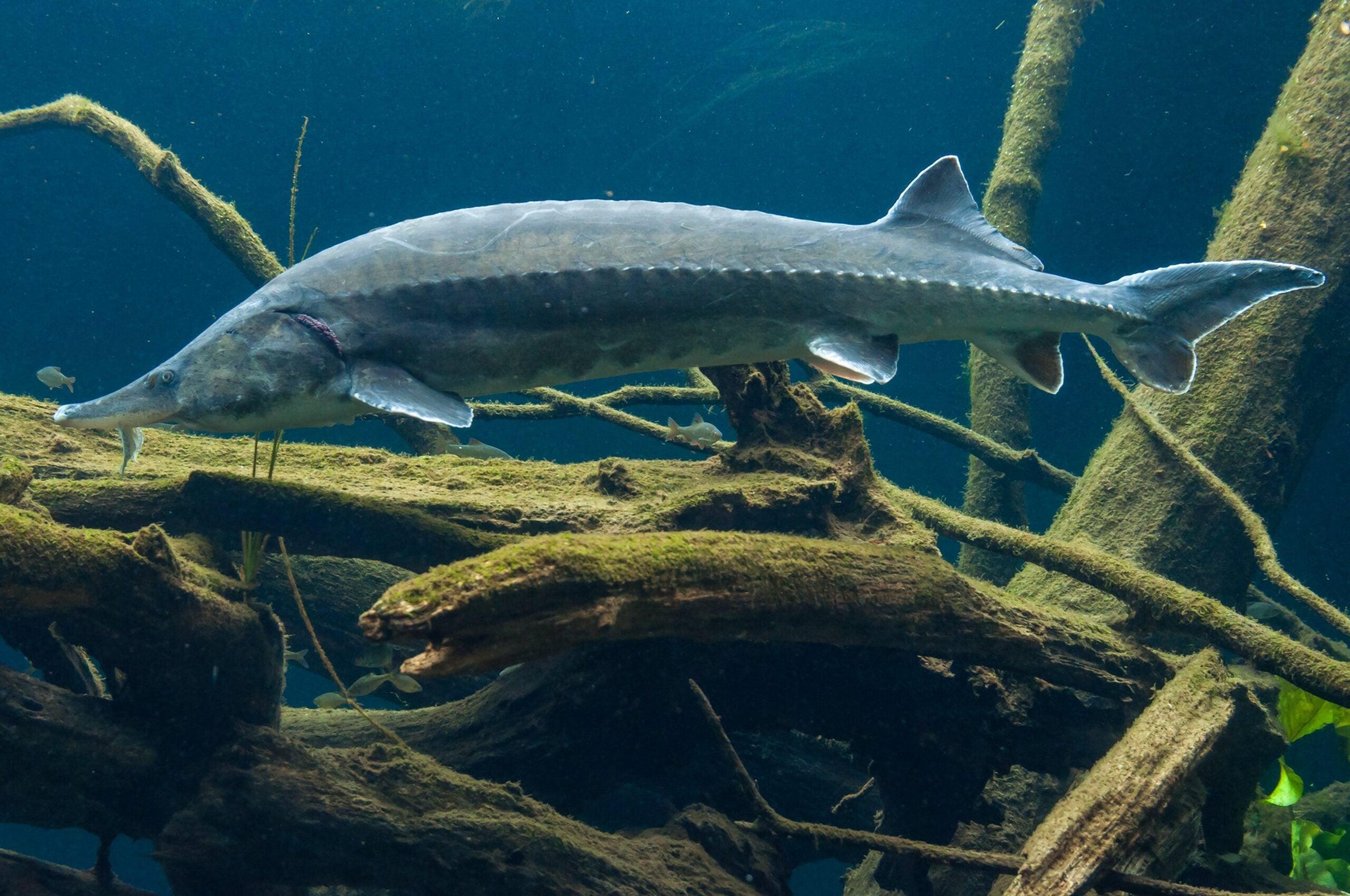
The Beluga Sturgeon is one of the largest freshwater fish species in the Caspian and Black Sea basins.
Beluga sturgeons are known for their long lifespan and valuable roe, which is processed into caviar. They can grow up to 24 feet long and weigh around 3,500 pounds.
- Region of Habitat: Caspian and Black Sea basins
- Scientific Name: Huso huso
- Place of Origin: Caspian and Black Sea basins
- Feeding Habits: Carnivorous, eating fish and invertebrates
- What Sound They Make: Silent
Fun Fact: Beluga sturgeons can live up to 100 years. They are also known for their slow reproductive rate, with females maturing around 15-20.
44. Bengal Tiger
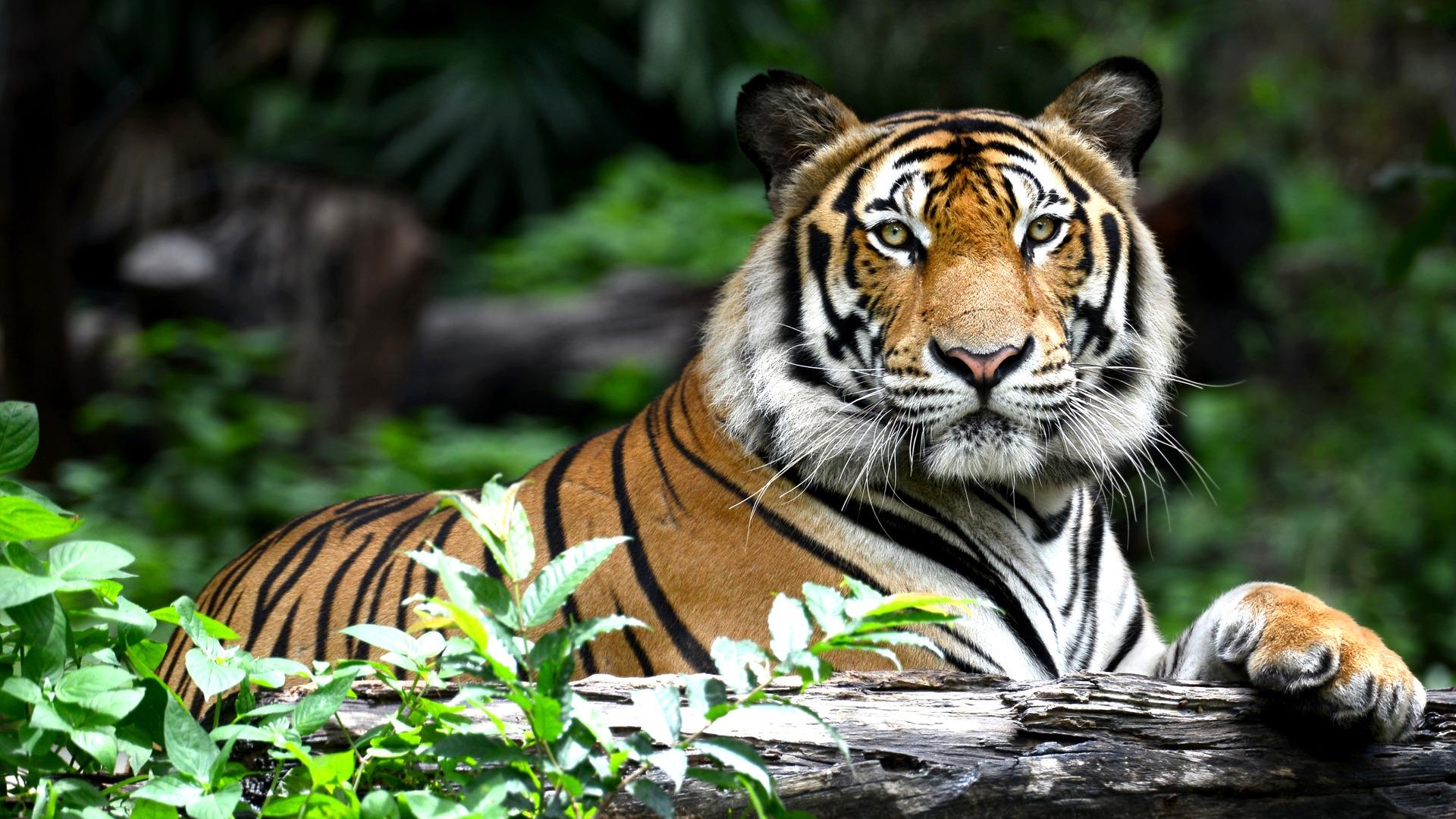
The Bengal Tiger is a large and powerful feline found primarily in India. Known for its striking orange coat with black stripes, it is an apex predator and plays a vital role in its ecosystem.
Bengal tigers can grow up to 10 feet long and weigh between 220-660 pounds.
- Region of Habitat: India, Bangladesh, Bhutan, Nepal
- Scientific Name: Panthera tigris tigris
- Place of Origin: Indian subcontinent
- Feeding Habits: Carnivorous, eating deer, wild boar, and other large mammals
- What Sound They Make: Roaring and growling sounds
Fun Fact: Unlike most big cats, Bengal tigers are excellent swimmers who enjoy the water. They can swim for several miles and have been known to cross rivers in search of prey.
45. Black Rhinoceros
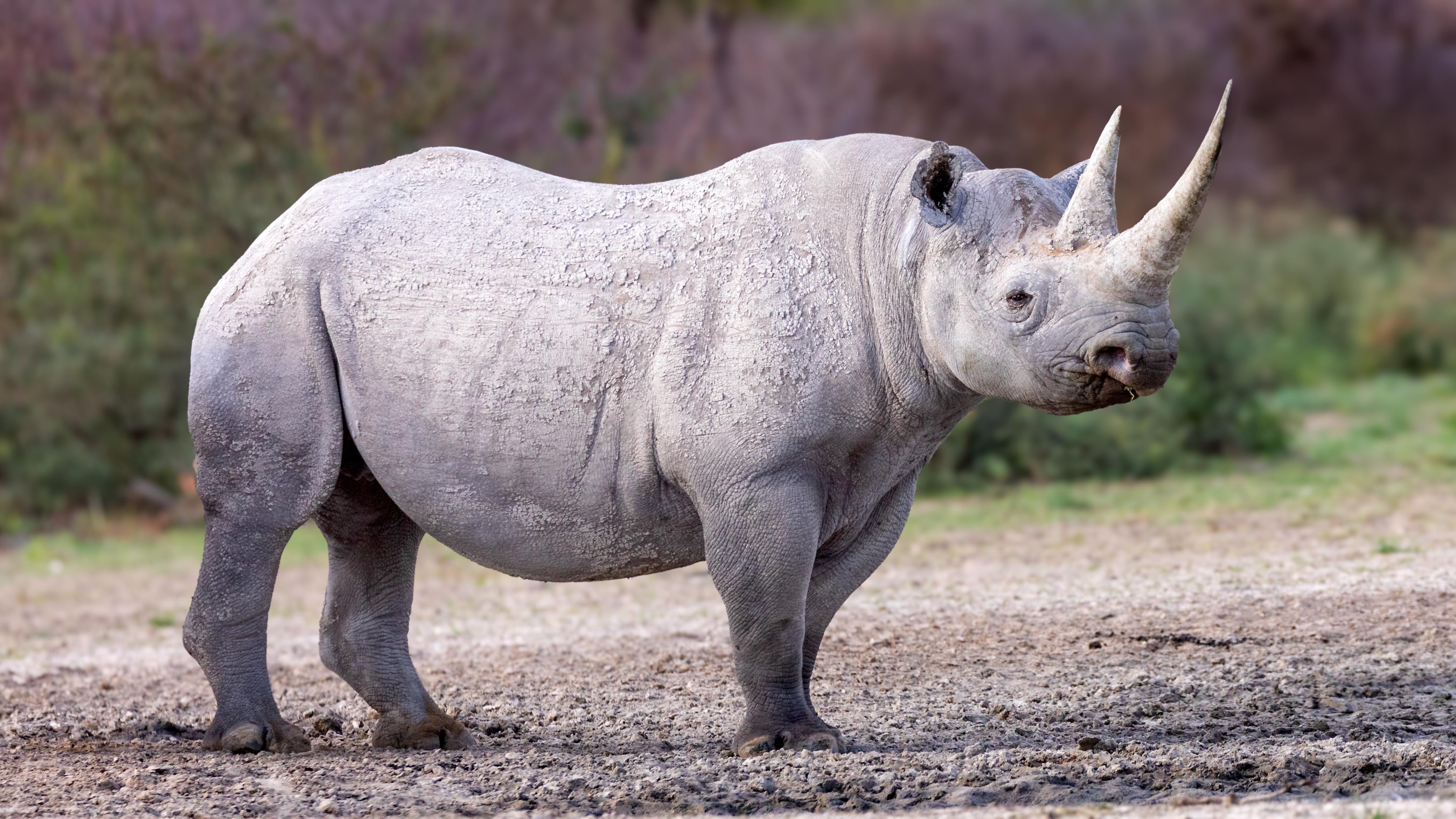
The Black Rhinoceros is a critically endangered species in eastern and southern Africa. It is known for its thick skin, two horns, and solitary nature.
Black rhinos play a crucial role in their ecosystem by shaping vegetation. They can grow 4.5-5.5 feet at the shoulder and weigh between 1,760 and 3,080 pounds.
- Region of Habitat: Eastern and Southern Africa
- Scientific Name: Diceros bicornis
- Place of Origin: Eastern and Southern Africa
- Feeding Habits: Herbivorous, eating leaves, branches, and shrubs
- What Sound They Make: Grunting and snorting sounds
Fun Fact: Black rhinos have a prehensile upper lip, which they use to grasp leaves and twigs. They are also known for their aggressive behavior when threatened.
46. Black Widow Spider
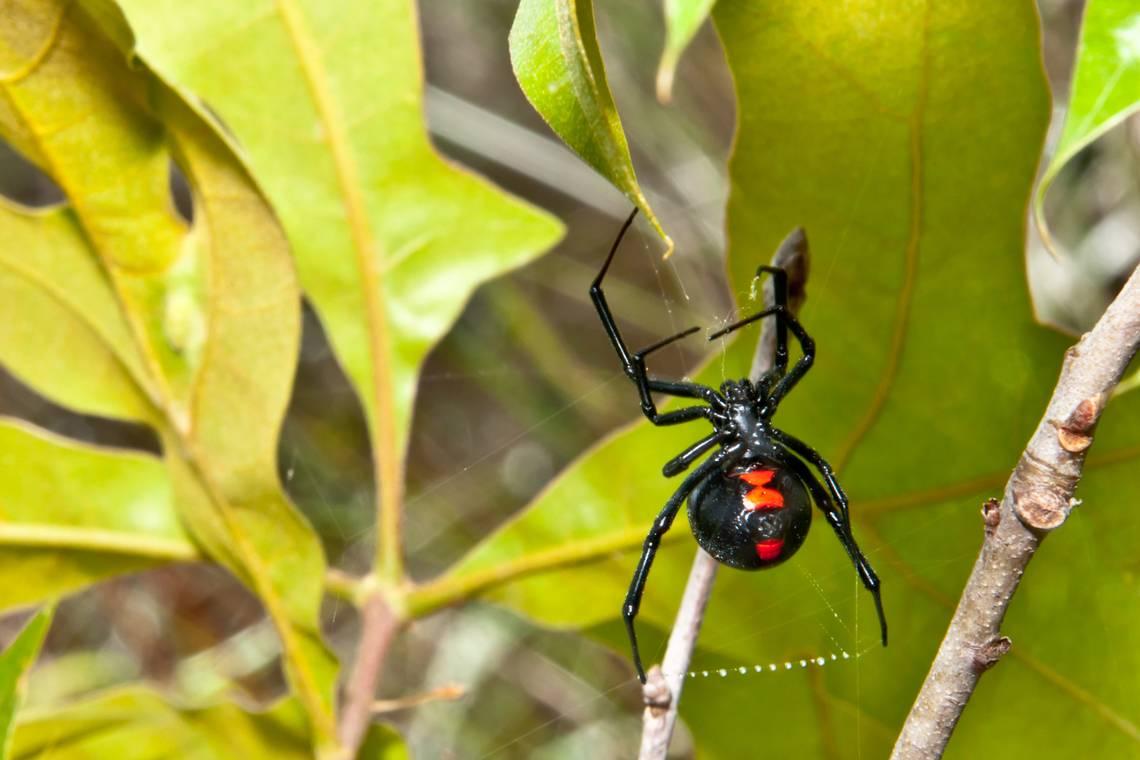
The Black Widow Spider is a venomous spider known for its distinctive black body and red hourglass marking.
Black widow spiders are found in warm climates worldwide and are known for their potent venom, which harms humans. They can grow 0.5-1.5 inches long and weigh less than 0.1 ounces.
- Region of Habitat: Warm climates worldwide
- Scientific Name: Latrodectus
- Place of Origin: Warm climates worldwide
- Feeding Habits: Carnivorous, eating insects and small animals
- What Sound They Make: Silent
Fun Fact: Female black widow spiders are notorious for eating their mates after reproduction. Their venom is 15 times more potent than rattlesnakes, but bites are rarely fatal to humans.
47. Blue Jay
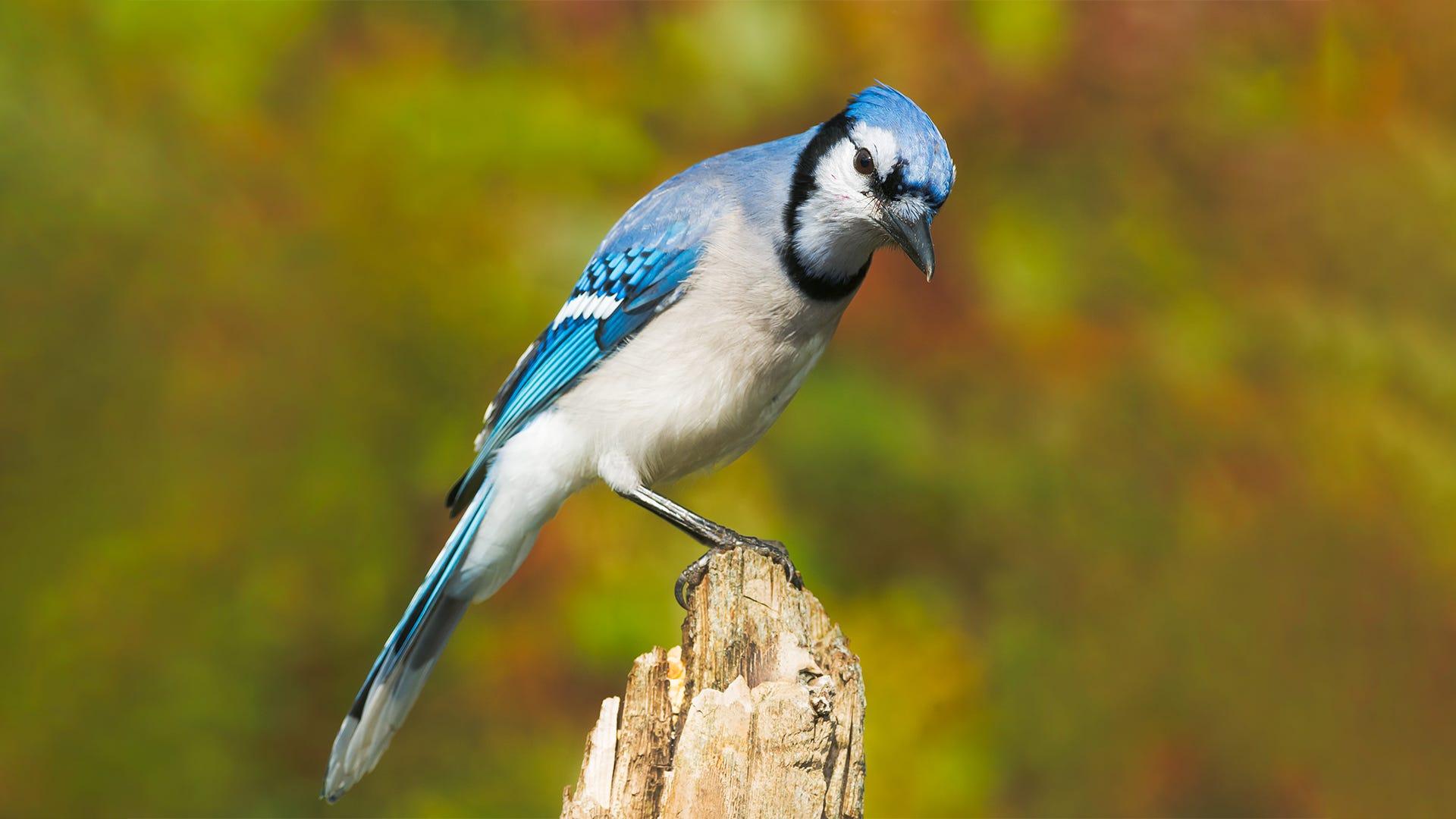
The Blue Jay is a vibrant bird native to North America, known for its bright blue feathers and distinctive crest.
Blue jays are intelligent and social birds often found in forests, parks, and suburban areas. They can grow 9-12 inches long and weigh 2.5-3.5 ounces.
- Region of Habitat: North America
- Scientific Name: Cyanocitta cristata
- Place of Origin: North America
- Feeding Habits: Omnivorous, eating nuts, seeds, insects, and small animals
- What Sound They Make: Various calls, including loud “jay” sounds
Fun Fact: Blue jays can mimic the calls of hawks to scare away other birds. They are also known for their complex social behaviors and ability to plan for the future by storing food.
48. Blue-Ringed Octopus
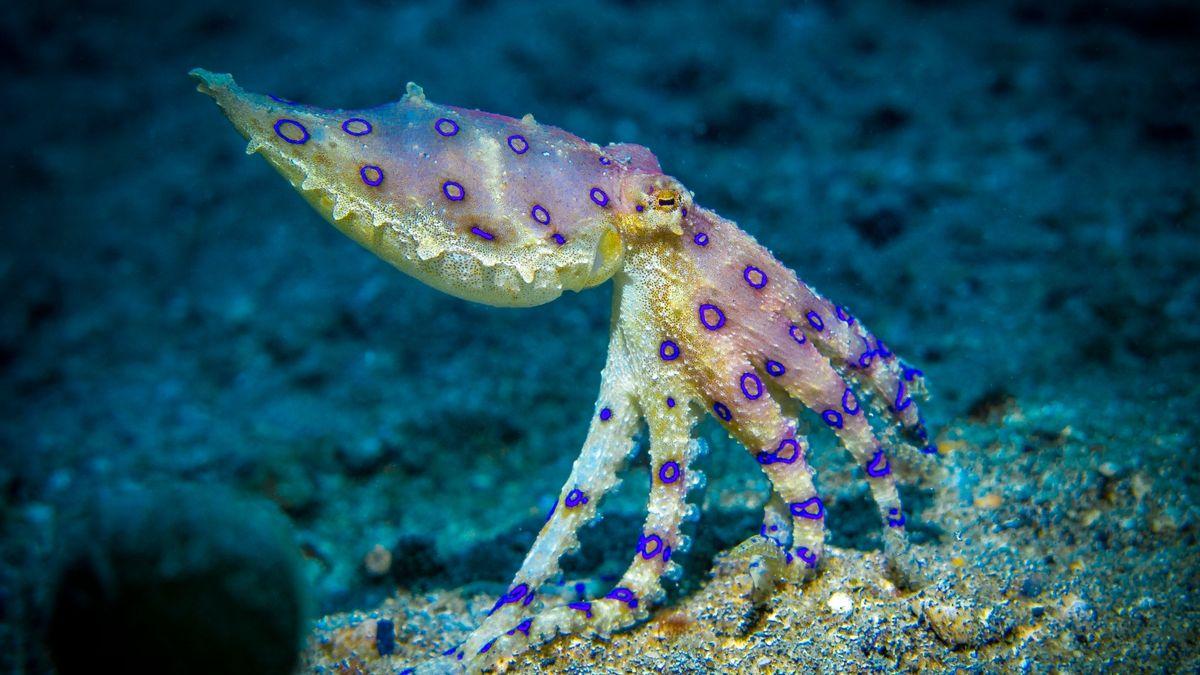
The Blue-Ringed Octopus is a small but highly venomous octopus found in the Pacific and Indian Oceans.
It is known for its bright blue rings, which appear when the octopus feels threatened. The octopus’s venom can be deadly to humans despite its small size.
Blue-ringed octopuses can grow 5-8 inches long and weigh between 0.2-1 ounce.
- Region of Habitat: Pacific and Indian Oceans
- Scientific Name: Hapalochlaena
- Place of Origin: Pacific and Indian Oceans
- Feeding Habits: Carnivorous, eating small fish and crustaceans
- What Sound They Make: Silent
Fun Fact: The venom of a blue-ringed octopus is strong enough to kill 26 adult humans within minutes. They are also known for their ability to change color and blend into their surroundings.
49. Bonobo
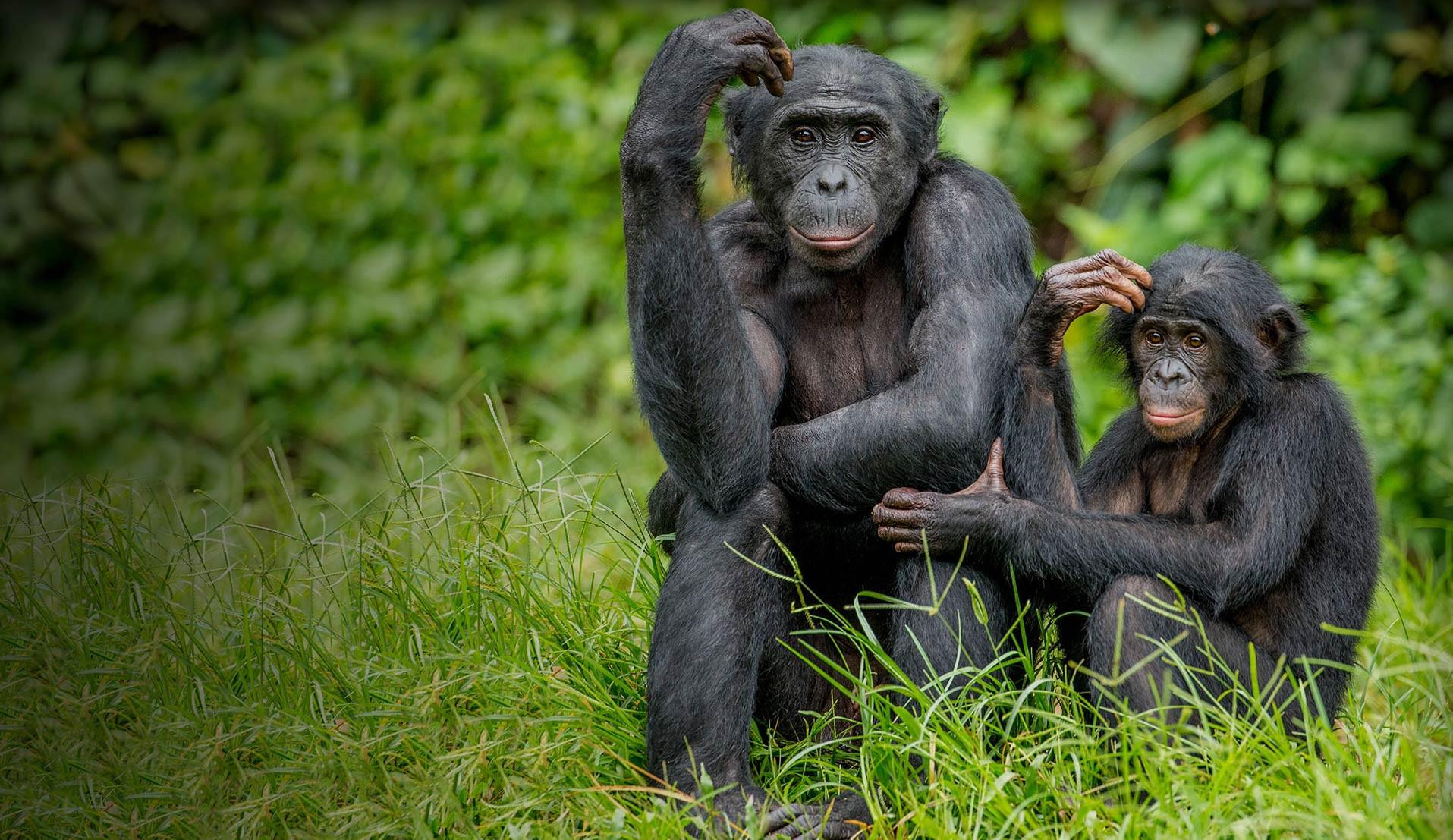
Bonobos are great apes closely related to chimpanzees, known for their peaceful and matriarchal societies.
They are found in the Democratic Republic of Congo and are known for their social behaviors, including extensive use of sexual behaviors to resolve conflicts.
Bonobos can grow 28-31 inches tall and weigh between 68-86 pounds.
- Region of Habitat: Democratic Republic of Congo
- Scientific Name: Pan paniscus
- Place of Origin: Democratic Republic of Congo
- Feeding Habits: Omnivorous, eating fruits, leaves, and small animals
- What Sound They Make: Various vocalizations, including high-pitched screams
Fun Fact: Bonobos share over 98% of their DNA with humans, making them one of our closest living relatives.
They are also known for their complex social structures and strong community bonds.
50. Bull Terrier

The Bull Terrier is a muscular, egg-headed dog breed known for its unique appearance and playful personality.
Bull terriers are loyal and affectionate pets. They are often used as family companions and show dogs. Bull terriers can grow 18-22 inches tall and weigh 50-70 pounds.
- Region of Habitat: Domestic, worldwide
- Scientific Name: Canis lupus familiaris
- Place of Origin: United Kingdom
- Feeding Habits: Omnivorous, eating commercial dog food and meat
- What Sound They Make: Barking and growling
Fun Fact: Bull Terriers are sometimes called “kid in a dog suit” due to their playful and mischievous nature. They are also known for their strong-willed and independent character.
Conclusion
Our journey through animals with B names reveals nature’s incredible diversity. From the blue whale to the blue-ringed octopus, these creatures showcase various adaptations and behaviors.
We’ve seen beavers’ dam-building skills, bonobos’ peaceful societies, and the unique traits of many other species.
This exploration highlights the importance of biodiversity and our planet’s complex web of life. Learning about these animals gives us a deeper appreciation for the natural world.
As we move forward, let’s use this knowledge to foster greater respect for all creatures and their roles in the environment.
The next time you encounter an animal whose name starts with B, you’ll have a richer understanding of its place in nature.

